#time span: 1967-1986
Text
Stats Time! Europe Saves Disney in the '70s

The so-called "Dark Age" of animation, and especially Disney's, the entirety of the 1970s and a good part of the 1980s... The span of films made in the post-Walt years from THE ARISTOCATS (1970) all the way up until - depending on who you ask - THE BLACK CAULDRON (1985). Some extend it further, counting THE GREAT MOUSE DETECTIVE (1986) and OLIVER & COMPANY (1988) as part of this "Dark" age or "Bronze" age or whatever.
I feel like those labels are an oversimplification...
While the general consensus is that the films made at Walt Disney Productions' animation wing in Burbank after the completion of THE JUNGLE BOOK and before the release of THE LITTLE MERMAID are relative low points for the company or that those films are just not-that-great (which is all subjective, I know at least one or two folks who make a case for this age of Disney being an "underrated" one), this was **not** a period of box office failure. That's for sure. Every film except THE BLACK CAULDRON made its money back. It is presumed that the Frankenstein-job clipshow feature that was 1977's THE MANY ADVENTURES OF WINNIE THE POOH also did pretty well...
After all, if one of those 1970s movies were to lose money, then the animation unit could've circled the drain. Heck, BLACK CAULDRON's performance brought about discussions of shutting down Disney Animation. That's all it could've taken... One movie losing money, and that would be the end of that. Animation was often at the mercy of indifferent executives who saw it as something too costly and something that just had a hard time drawing in audiences.
Finding box office stats isn't easy for older Disney animated films, you usually come across exaggerated or inflated numbers of some kind. (For example, THE JUNGLE BOOK did not make $73m in North America in 1967/68. The total was closer to $13m. Maybe $73m was the number it adjusted to in like, the 1990s?) International numbers are even muddier, but sometimes, you do find some juicy helpful information..
More recently, I discovered just how much the European box office helped Disney's animated features soldier on during a transitional, rollercoaster period...
I have often pointed out on here that France and West Germany were where these films usually made bank, big time. THE ARISTOCATS, ROBIN HOOD, THE RESCUERS, and THE FOX AND THE HOUND were all massive there, Top 10 hits. I mean, given that THE ARISTOCATS is set in Paris and the French countryside, it being a blockbuster in France is a given. Despite some Americanization (Southern-accented dogs, the very late '60s-looking American hippie cat in Scat Cat's gang, etc.), a lot of which likely bypassed in the movie's French dub. But yeah, French moviegoers rewarded each of these movies nicely, as did Germans on the West side of the Iron Curtain. This all came off just how *huge*, like ginormous THE JUNGLE BOOK was in West Germany and how big it was in France...
Even THE BLACK CAULDRON did pretty great in France. THE RESCUERS outgrossed STAR WARS... STAR WARS... In France and West Germany, in the same release year... Wild, huh?
Meanwhile, these movies did not crack the Top 10 in America in their respective release years. THE JUNGLE BOOK would be the last Disney animated movie to make the Top 10 domestically, until BEAUTY AND THE BEAST... Some 24 years later.
The UK box office was also quite charitable. THE ARISOCATS and ROBIN HOOD did exceptionally there, THE RESCUERS did well too. Unusually, THE FOX AND THE HOUND did not break the UK top 20 in its release frame... Maybe that one was a little too American? Too gloomy? I couldn't tell you.
Speaking of the UK box office, that's where the homegrown WATERSHIP DOWN shined. It only did, as far as I know, fairly here in the states.
Don Bluth's THE SECRET OF NIMH was a minor success in France, ditto AN AMERICAN TAIL. According to some reports out there, Ralph Bakshi's HEY GOOD LOOKIN' did pretty well in Europe despite a nonexistent run in the U.S.
Fascinating... Other countries to the rescue, it seems.
15 notes
·
View notes
Text
OC Birthdays so far!
Inspired by @daughter-of-melpomene's list because it's a very good ideas! A few of these just have the year because I haven't decided exactly when they're born, but you get the idea!
Steph Taylor (The Flash) - 12th of March 1986
Brianna Thawne (Legends of Tomorrow) - 18th of September 2165 (26 at the start of the story)
Nicky Connors (Miyagi-verse) - 10th of July 1967
Gemma Laura McKinney (Cobra Kai) - 18th of March 1997
Elaine Barnes (Cobra Kai) - 4th of September 2001
Leah Barnes (Cobra Kai) - 1970
Eliana Kent (Supergirl) - 28th of February 1995
Ashley Tanner (Krypton) - 10th of February 1995
Maia Curry (DCEU Aquaman) - 3rd of May 2003
Theodore Edward Thawne (The Flash) - 5th of February 2019 (21 at the start of the story)
Sophia Reynolds (Firefly) - 18th of July 2499
Sarah Thompson (Agent Carter) - 1922 (25 at the start of the story)
Alex Thompson (MCU) - 1977
Hannah Edwards (MCU) - 12th of October 1999
Kate Simons (MCU) - 1986 (28 at the start of the story)
Emma Johnson (Inhumans) - 1989
Caitlin Sherwood (Buffy the Vampire Slayer) - 30th of September 1976
Teri Merlyn (Arrow - Earth-2) - 13th of January 1978 (35 at the start of the story)
Mel Hathaway (Star Trek TOS) - 10th of November 2226
Niamh Cassidy (Once Upon a Time) - 16th of January 2005
Sophie Sloan (Diagnosis Murder) - 1983 (10 at the start of the story)
Áine an Tordarroch (The Witcher) - 1230 (Arc 1 spans from ages 18 to 33)
Joanna Mayfield (Uncharted) - 10th of March 1993
Marie Douglas (The Professionals) - 18th of October 1952
Brianna Louise Wilson (NCIS) - 17th of January 1977 (33 at the start of the story)
Lexa Sullivan (The Old Guard) - 1988
Sheridan Ó Séaghdha (Thunderbirds TOS) - 2040 (25 at the start of the story)
Tiana Everton (Thunderbirds TOS) - 2042 (23 at the start of the story)
Devon Avery (Moonfall) - 12th of April 1980
Tagging (let me know if you want to be added or removed): @shrinkthisviolet @starstruckpurpledragon @vexic929 @negative-speedforce @dream-beyond-the-fantasy @lady-of-the-spirit @fezwearingjellybananas @far-shores
5 notes
·
View notes
Text
Happy 81st birthday to Bob Dylan!
Robert Dylan who was born as Robert Allen Zimmerman on May 24, 1941 is an American singer-songwriter. He was born to Abram and Beatrice "Beatty" Zimmerman.
Bob regarded as one of the greatest songwriters of all time, Dylan has been a major figure in popular culture during a career spanning more than 60 years.
Much of his most celebrated work dates from the 1960s, when songs such as "Blowin' in the Wind" (1963) and "The Times They Are a-Changin'" (1964) became anthems for the civil rights and antiwar movements.
His lyrics during this period incorporated a range of political, social, philosophical, and literary influences, defying pop music conventions and appealing to the burgeoning counterculture.
Bob was married twice. Dylan married Sara Lownds, who had worked as a model and a secretary at Drew Associates, on November 22, 1965. Their first child, Jesse Byron Dylan, was born on January 6, 1966, and they had three more children: Anna Lea (born July 11, 1967), Samuel Isaac Abram (born July 30, 1968), and Jakob Luke (born December 9, 1969).
Dylan also adopted Sara's daughter from a prior marriage, Maria Lownds (later Dylan, born October 21, 1961). Sara Dylan played the role of Clara in Dylan's film Renaldo and Clara (1978). Bob and Sara Dylan were divorced on June 29, 1977.
Dylan and his backup singer Carolyn Dennis (often professionally known as Carol Dennis) have a daughter, Desiree Gabrielle Dennis-Dylan, born on January 31, 1986.
The couple were married on June 4, 1986, and divorced in October 1992. Their marriage and child remained a closely guarded secret until the publication of Howard Sounes's biography Down the Highway: The Life of Bob Dylan, in 2001.
Today Bob is single and lives primarily in Point Dume, a promontory on the coast of Malibu, California, though he also owns property around the world. Happy 81st birthday Bob!



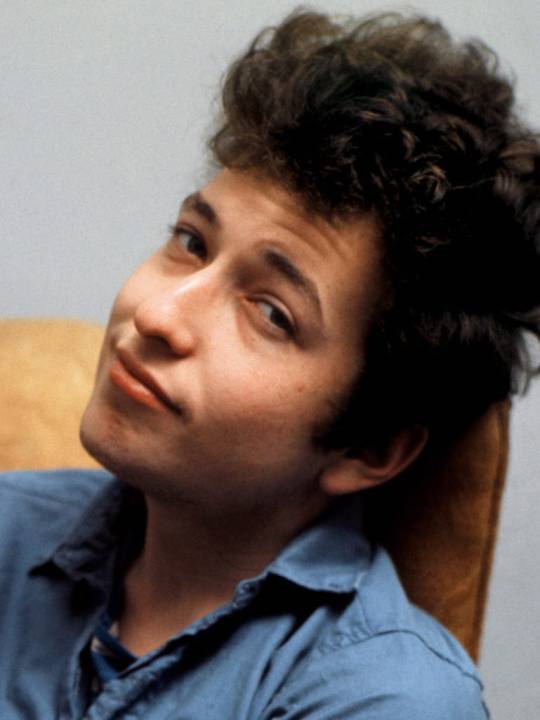


12 notes
·
View notes
Text
On Marshall Frothingham: Former MRA, Early U.S. Moonie
A testimony of Marshall Frothingham from the January 1968 issue of the Moonie publication New Age Frontiers

I first met the Divine Principle in February when my cousin happened to recognize me at a church coffee hour. This would not be so surprising except that we had had no contact with each other for years and she recognized me only because of snapshots in a family album.
At the time I was attending meetings of "Sing-Out, Washington" (affiliated with Moral Re-Armament), and because of the spirit and enthusiasm of the people in it and the songs they sang, I really felt that "Sing-Out" could provide an answer, or at least a part of the answer, to man's problems. From their songs and speeches, the members said theirs was an ideology superior to those advocated by bigots, dictators, and Communists because MRA advocated liberty, equality and fraternity for all mankind (though not in those exact words). My only objection was that they rarely gave any credit to, or even made mention of, the Father. For this reason, I worked in MRA and attended church, hoping the combination would prove to be effective.
Then when I met the Family, I saw it at first only as another group like the MRA, and tried to combine the three. (Later I joined the Civil Air Patrol, and for a couple of months I don't know how I ever kept track of all the different meetings I was supposed to attend.) Unfortunately, it took me a long time to grasp the extent of the difference and to realize how much more the Divine Principle had to offer and how important it was that everyone spread the teachings of the Principle in whatever ways possible.
This, then, is what I feel our job is: To understand the Principle so well that all our thoughts and actions are directed toward bringing all mankind into the proper relationship with the Father, with themselves, and with the rest of the universe.
Related articles and notes below
On the Unification Church Inheriting the Moral Re-Armament Movement’s Role (and Resources on the MRA)
The Imperial Ghost in the Neoliberal Machine (Figuring the CIA)
Happiness ginseng from earth-conquering Moonies – Japan 1978:
It may be recalled that Kishi, once a key figure in General Tojo’s World War II cabinet, became one of the most passionate spokesmen for Dr Frank Buchman’s Moral Rearmament (MRA) in 1950s and 1960s. The striking similarity between the moral precepts and secular programmes of MRA and Moon’s church is of interest here because the latter was born as an international movement at the very time when MRA was swiftly declining in Japan. Following the upheaval over the Security Treaty in 1960, which forced his resignation as prime minister, Kishi declared with characteristic hyperbole: “But for Moral Rearmament, Japan would be under communist control today.” Curiously, little was heard about MRA after the early 1960s. Instead, there was much bombast about the Asian People’s Anticommunist League, in which Kishi played the same role as elder statesman and spokesman. There are reports that in 1959 or thereabouts Moon played go-between for an alliance between the MRA leadership and the APACL. When the World Anticommunist League and IFFVOC were formed in the late 1966 and 1967 respectively, Kishi again came to the fore, and today he is front man for the Day of Hope.
From a UC obituary for Marshall Buxton Frothingham (March 5, 1986):
Marshall Frothingham's numerous activities in the Unification Church spanned the years from 1968 to 1986. Elder American church members have vivid memories of his cheerful contributions to early pioneering work, and the staff of the New York City Tribune fondly recall his loyal participation in the first years of the newspaper. Fellow families of the 1800 Couples Blessing treasure his dedication to the cause of unity, especially among blessed families.
Although he was never known to complain of his suffering, Marshall's entire life since babyhood was made difficult by chronic bronchial asthma, at times so severe as to make for a day-to-day struggle for survival. However, he chose not to be pampered, but instead always went out of his way to help others, even beyond the apparent limits imposed by a frail body, and always with effervescent good humor.
In the early hours of March 5, 1986, Marshall succumbed to one final attack of asthma at his home in the World Mission Center, where he lived with his wife Gloria and their one-year-old son Stephen Patrick. His Seunghwa ceremony was held in New York City, where President Mose Durst, Rev. Ken Sudo, and several other members gave moving testimonies to his stamina, his faith, and his example of fearlessness. All who were close to him share a sense of victory and joy in Marshall's Seunghwa. It is already clear that he will continue to work devotedly for the providence, as a testimony to the triumph of the living spirit.
#mra#Moral Re-Armament Movement#moral re-armament#moonies#unification church in the united states of america#unification church in the united states#unification church in usa#1968#sing out#testimony#american church#new age frontiers
0 notes
Text
10 Famous David Hockney Paintings
David Hockney is a world-renowned British artist known for his colorful and vibrant paintings. Born in Bradford, England, in 1937, Hockney has had a long and successful career spanning over six decades. He is known for his diverse range of styles, from Pop Art to Photorealism, and his paintings have become iconic in the art world. In this article, we will take a closer look at ten of David Hockney's most famous paintings.
A Bigger Splash
"A Bigger Splash" is one of Hockney's most iconic paintings, depicting a California swimming pool in a vibrant blue color. The painting is part of a series of swimming pool paintings that Hockney created during his time in Los Angeles in the 1960s. The painting's bold colors and graphic simplicity have made it a favorite among art lovers.
Portrait of an Artist (Pool with Two Figures)
"Portrait of an Artist (Pool with Two Figures)" is another famous Hockney painting from his swimming pool series. The painting depicts a man standing at the edge of a swimming pool, gazing down at a figure swimming underwater. The painting's composition and colors are striking, and the image has become one of Hockney's most recognizable works.
Mr. and Mrs. Clark and Percy
"Mr. and Mrs. Clark and Percy" is a portrait of Hockney's friends, the fashion designer Ossie Clark and his wife, Celia Birtwell. The painting shows the couple seated on a sofa in their London apartment, with their cat, Percy, sitting on the floor beside them. The painting is notable for its use of color and its portrayal of the couple's relationship.
Pearblossom Highway
"Pearblossom Highway" is a large-scale photomontage created by Hockney in 1986. The work is composed of over 700 individual photographs, assembled to create a collage of the Mojave Desert landscape. The work is notable for its scale and its use of photography as a medium for art.
My Parents
"My Parents" is a double portrait of Hockney's parents, created in 1977. The painting shows the artist's mother and father sitting in their living room in Yorkshire, England. The painting's realism and attention to detail make it a powerful portrait of the artist's parents.
Garrowby Hill
"Garrowby Hill" is a landscape painting created by Hockney in 1998. The painting depicts the countryside near the artist's home in Yorkshire, England, with bright green fields and a winding road leading up a hill. The painting is notable for its use of color and its portrayal of the English countryside.
Nichols Canyon
"Nichols Canyon" is another famous Hockney painting from his time in Los Angeles. The painting shows a winding road leading through the hills of Nichols Canyon, with bright blue skies and lush green trees. The painting's bold colors and graphic simplicity make it a favorite among art lovers.
The Arrival of Spring in Woldgate, East Yorkshire in 2011
"The Arrival of Spring in Woldgate, East Yorkshire in 2011" is a series of paintings created by Hockney in 2011. The paintings depict the changing landscape of the English countryside during the spring months. The paintings are notable for their use of color and their portrayal of the beauty of the natural world.
Kasmin
"Kasmin" is a portrait of the art dealer John Kasmin, created by Hockney in 1967. The painting shows Kasmin standing in front of a blue background, with a cigarette in his hand. The painting's bold colors and graphic simplicity make it a powerful portrait of a prominent figure in the art world.
The Double Portrait of Lucian Freud and Frank Auerbach
"The Double Portrait of Lucian Freud and Frank Auerbach" is a painting created by Hockney in 1969. The painting shows the two artists sitting side by side, with Freud holding a cigarette and Auerbach looking off to the side. The painting is notable for its portrayal of the two artists' friendship and its use of color and composition.
In conclusion, David Hockney's paintings are a testament to his creativity, innovation, and unique style. His use of color, composition, and medium have made him one of the most significant artists of our time. Each of the ten paintings we've explored in this article offers a glimpse into Hockney's artistic vision and legacy. Whether you are a fan of Pop Art, Photorealism, or landscape painting, there is no denying the impact of David Hockney's work on the art world.
Check out our website for buying exhibition posters and Paintings. Merch Fuse.
1 note
·
View note
Photo

TV Guide - July 8 - 14, 1961
Harry Morgan (born Harry Bratsberg; April 10, 1915 – December 7, 2011) Actor and director whose television and film career spanned six decades. Morgan's major roles included Pete Porter in both December Bride (1954–1959) and Pete and Gladys (1960–1962); Officer Bill Gannon on Dragnet (1967–1970); Amos Coogan on Hec Ramsey (1972–1974); and his starring role as Colonel Sherman T. Potter in M*A*S*H (1975–1983) and AfterMASH (1983–1985). Morgan appeared in more than 100 films.
In the 1964–1965 season, Morgan co-starred as Seldom Jackson in the 26-week NBC comedy/drama Kentucky Jones, starring Dennis Weaver, formerly of Gunsmoke.
In 1986, he co-starred with Hal Linden in Blacke's Magic, a show about a magician who doubled as a detective solving unusual crimes. One season was made. Morgan's character, Leonard Blacke, was a semiretired con artist.
Morgan also had a recurring role on 3rd Rock from the Sun as Professor Suter, a colleague of Dick Solomon's. Morgan directed episodes for several TV series, including two episodes of The Alfred Hitchcock Hour, two episodes of Hec Ramsey, one episode of Adam-12, and eight episodes of M*A*S*H. Morgan had a guest role on The Jeff Foxworthy Show as Raymond and a guest role on Grace Under Fire as Jean's pot-smoking boyfriend. (Wikipedia)
--------------------------------------------------------------------------------------------
Cara Williams (born Bernice Kamiat; June 29, 1925) Film and television actress. She is best known for her role as "Billy's Mother" in The Defiant Ones (1958), for which she was nominated for the Academy Award for Best Supporting Actress, and for her role as Gladys Porter on the 1960–62 CBS television series Pete and Gladys, for which she was nominated for the Emmy Award for Best Lead Actress in a Comedy.
Williams appeared in four episodes of Alfred Hitchcock Presents: "Decoy" (1956), "De Mortuis" (1956), "Last Request" (1957), and "The Cure" (1960). From 1960 to 1962, she starred in the CBS television comedy series Pete and Gladys, with Harry Morgan as Pete. The series was a spin-off of the CBS comedy December Bride, in which Morgan appeared from 1954 to 1959 as Pete Porter. Gladys, his wife, was referred to throughout the entire run of that series but never shown. Williams brought the character to life with Morgan retaining his role as her husband. Williams was nominated for the Emmy Award for Best Lead Actress in a Comedy. For the next two years, while still under contract to the network, CBS kept her in the public eye by repeating Pete and Gladys episodes as part of its morning line-up, an unusual move for a short-run series. CBS returned Williams to prime time in 1964 in her own series, The Cara Williams Show, in which she and Frank Aletter portrayed a married couple who had to keep their marriage secret from their employer. It lasted only one season. (Wikipedia)
28 notes
·
View notes
Photo
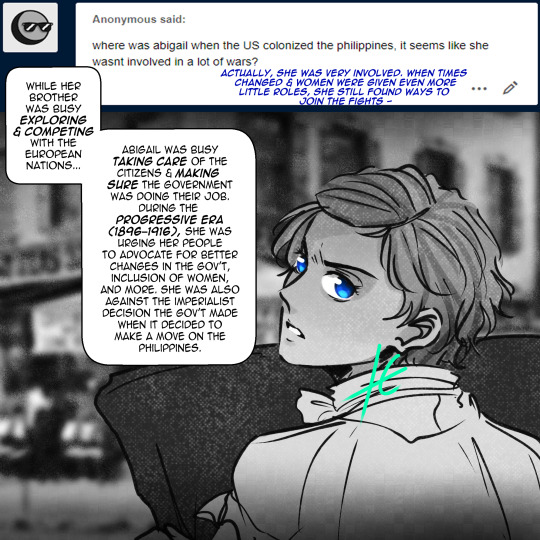
:::HISTORY TIME:::
The Progressive Era (1896–1916) was a period of widespread social activism and political reform across the United States of America that spanned the 1890s to the 1920s. Progressive reformers were typically middle-class society women or Christian ministers.
The main objectives of the Progressive movement were addressing problems caused by industrialization, urbanization, immigration, and political corruption. Social reformers were primarily middle-class citizens who targeted political machines and their bosses. By taking down these corrupt representatives in office, a further means of direct democracy would be established.
They also sought regulation of monopolies (trustbusting) and corporations through antitrust laws, which were seen as a way to promote equal competition for the advantage of legitimate competitors. They also advocated for new government roles and regulations, and new agencies to carry out those roles, such as the FDA. The Progressive Era played a pivotal role in US history.
Initially, the movement operated chiefly at the local level, but later it expanded to the state and national levels. Progressives drew support from the middle class, and supporters included many lawyers, teachers, physicians, ministers, and business people.
Some Progressives strongly supported scientific methods as applied to economics, government, industry, finance, medicine, schooling, theology, education, and even the family. They closely followed advances underway at the time in Western Europe and adopted numerous policies, such as a major transformation of the banking system by creating the Federal Reserve System in 1913 and the arrival of cooperative banking in the US with the founding of its first credit union in 1908.
Reformers felt that old-fashioned ways meant waste and inefficiency, and eagerly sought out the "one best system".
REFERENCES:
1. John D. Buenker, John C. Boosham, and Robert M. Crunden, Progressivism (1986) pp 3–21
2. James H. Timberlake, Prohibition and the progressive movement, 1900–1920 (1970) pp 1–7.
3. David W. Southern, The Malignant Heritage: Yankee Progressives and the Negro Question, 1900–1915 (1968); Southern, The Progressive Era And Race: Reaction And Reform 1900–1917 (2005); Norman H. Clark, Deliver Us from Evil: An Interpretation of American Prohibition (1976) p 170; and Aileen Kraditor, The Ideas of the Woman Suffrage Movement: 1890–1920 (1967). 134–36.
4. McGerr, Michael. A Fierce Discontent: The Rise and Fall of The Progressive Movement in America. Oxford University Press. p. 77.
5. Joseph Dorfman, The economic mind in American civilization, 1918–1933 vol 3, 1969
6. Barry Karl, Charles E. Merriam and the Study of Politics (1975)
7. George Mowry, The California Progressives (1963) p 91.
8. Daniel T. Rodgers, Atlantic Crossings: Social Politics in a Progressive Age (1998)
9. Michael Kazin; et al. (2011). The Concise Princeton Encyclopedia of American Political Turn up History. Princeton University Press. p. 181. ISBN 9781400839469
10. Richard Hofstadter, The Progressive Historians: Turner, Beard, Parrington (1968).
#PLANETPUTO
BLOG: ask-emilz-de-philz.tumblr.com
16 notes
·
View notes
Link
https://ift.tt/2WZpvJm #

In stories about growing up for audiences who are growing up themselves, a strong main character is a necessity. Coming-of-age stories have been around for centuries and have always been popular in cinema, from the days of James Dean to the modern world of Netflix originals.
Related: 10 Of The Best Coming Of Age Movies Everyone Needs To See
While there are many elements of coming-of-age movies that work together to create one timeless tale, such as the soundtrack and shooting locations, the key is a lead protagonist with whom the viewer can wholly identify and empathize. Over the years, there have been some truly impressive young actors who nailed this brief and delivered performances that will forever stand out in their careers.
10 Nick Robinson – The Kings Of Summer (2013)

In a modern coming-of-age tale for fans of Stand By Me (1986), Nick Robinson stars as Joe, a teenager frustrated with his father’s micromanagement. To escape his smothering suburban life, he invites his best friend and an unusual new acquaintance to build a house in the woods and live off the land.
With humor as this movie’s crowning glory alongside breathtaking shots of the Midwest, Robinson demonstrates his acting range in an impressive feature film debut. He manages to effortlessly keep up with comedic veterans like Nick Offerman and Marc Evan Jackson but also demonstrates control and solemnity in the movie’s tenser moments.
9 Thomas Mann – Me And Earl And The Dying Girl (2015)
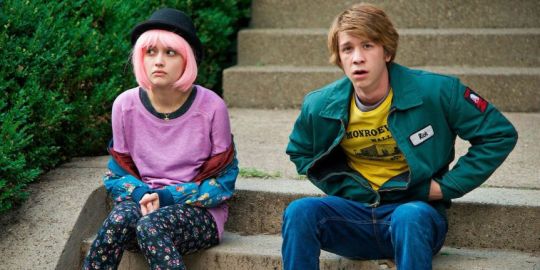
Greg is an unusual choice for a story’s main character, and Thomas Mann captures his socially awkward nature but chameleon-like behavior effortlessly. Although Greg has made it his mission to “remain on low-key good terms” with every student in school, he struggles to see outside of himself until he becomes friends with terminally ill Rachel (Olivia Cooke).
Related: 10 Best Coming Of Age Comedy Dramas Like Juno
Greg’s development is displayed with as much poise as such a gauche character can be afforded, from seeming emotionally blank to succumbing to grief in Rachel’s room. Opposite Nick Offerman and other great talents in Me And Earl And The Dying Girl, Mann’s comedic delivery, both verbal and physical, is truly something to behold and never wanes.
8 Elliot Page – Juno (2007)

Juno is the blueprint for American Independent cinema, primarily for its Oscar-winning script and unconventional story of teen pregnancy. With a host of celebrated actors surrounding them, Elliot Page shines in what is arguably their most memorable and beloved role.
The offbeat comedy and sarcastic quips of Juno is one for the textbooks, and Elliot carries it with ease from start to finish; the odd vocabulary tossed around rolls as effortlessly as standard English off their tongue. They may appear unimposing in stature, but they dominate every scene with wit and hilarious delivery to make not only an unforgettable movie but a memorable main character.
7 Patrick Fugit – Almost Famous (2000)
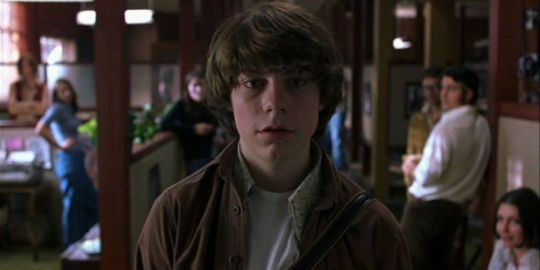
Aspiring writer William is something of a wallflower amongst the larger-than-life personalities of the band Stillwater and transfixing roadie Penny Lane (Kate Hudson), but he manages to hold his own and becomes somebody on whom they can all rely. Similarly, Patrick Fugit could have shrunk next to the more experienced actors beside him, but he triumphs.
The fresh-faced actor brings shining optimism and gentleness to a story of wild parties and volatile emotions. He captures William’s level-headed nature and wisdom beyond his years while still exuding the excitement of a newcomer to the rock and roll scene, perfectly balancing youth and innocence with shrewdness and morality.
6 Dustin Hoffman – The Graduate (1967)

A timeless tale of disillusionment in the face of change, The Graduate is fondly remembered for its incredible soundtrack from Simon and Garfunkel and the iconic affair with Mrs. Robinson (Anne Bancroft). Besides that, in a career-launching role, Dustin Hoffman proves his mettle as a force to be reckoned with onscreen.
Despite having an affair with a much older woman (and later falling for her daughter), Benjamin is a graceless and self-conscious leading man, and Nichols cast Hoffman with the belief that he had the perfect demeanor for the role. Between his personality and superb acting ability, Hoffman pulls off a memorable performance and is one of the main reasons why The Graduate has become a classic to stand the test of time.
5 Miles Teller – The Spectacular Now (2013)
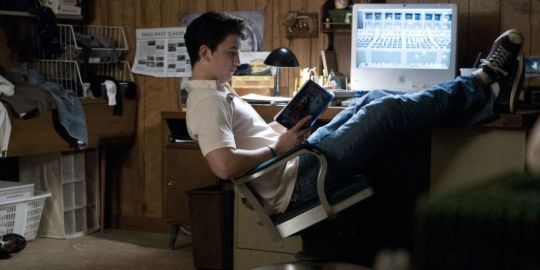
To bring to life hard-partying Sutter from Tim Tharp’s novel of the same name, the correct actor was called upon. Miles Teller oozes charm in this role and makes it easy to understand how Sutter has made it through life without a thought for the future since everything comes easily to him at the moment.
Besides being the life of the party and effortlessly sweet, Sutter is a young alcoholic who, below the surface, realizes that he is sabotaging his future, and Teller does a marvelous job of exploring this side to the endearing protagonist. The serious self-deprecation that follows reuniting with his absent father, who is a vision of Sutter’s own future, is relayed masterfully and leaves the audience in awe of his performance.
4 Saoirse Ronan – Lady Bird (2017)

Star Saoirse Ronan had a number of stellar movies under her belt before Greta Gerwig’s Lady Bird, with her first Oscar nomination at the age of thirteen only the beginning of an illustrious career. Her range sets her apart from other young actresses in the game, spanning from sci-fi to period drama to raw, coming-of-age movies such as this.
The main character of this tale is anything but meek. Ronan is strong-willed and assured in the role and explores the everyday highs and lows of growing up while cultivating believable onscreen relationships in a way that can place any viewer right alongside her in Sacramento, which feels more like home the longer that you watch her senior year progressing.
3 Greta Gerwig – Frances Ha (2012)

A coming-of-age movie for people who are already of age, Frances Ha chronicles a woman’s journey into adulthood as, while she has technically grown up, it is clear that she’s “not a real person yet”. While most movies of the genre take place in high school, this one takes place in New York as Frances struggles to realize her dream as a dancer, maintain her relationships, and generally get by as a functioning adult.
Related: Greta Gerwig’s 10 Best Movies (According To IMDB)
In another collaboration between Noah Baumbach and Greta Gerwig, the leading lady fits this character like a glove and harnesses the youthful spirit of teenage coming-of-age movies to prove that growing up doesn’t stop when you leave high school. It is an honest depiction of young adult life in that, really, nobody knows what they are doing.
2 Timothée Chalamet – Call Me By Your Name (2017)
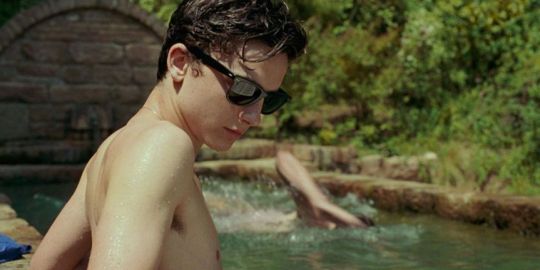
In one of his best movies Call Me By Your Name, Timothée Chalamet stars as young Elio in a story of young love in 1980s Italy. He is both charming and bashful, causing the viewer to fall in love with him even faster than Oliver does, and he manages to convey so much heart and recognizable pain that the extent of his acting ability is never in question.
While Chalamet brilliantly inspires empathy for Elio’s confusion and inner turmoil throughout his relationship with Oliver, his final performance during the credits is a masterclass in understated yet powerful acting, as we watch the cycle of Elio’s heartbreak and are left reeling from his final, heart-rending glance directly into the camera.
1 Logan Lerman – The Perks Of Being A Wallflower (2012)

At only 20 years old, Logan Lerman delivers one of the most honest and moving portrayals of adolescence in modern-day cinema. For an actor who has had widely varying roles, such as a heroic demigod and a plucky rancher’s son, an introverted character like Charlie could have been difficult to embody, but Lerman does so with an awe-inspiring grace.
Lerman’s presentations of depression and trauma are never extravagant; his performance is highly effective using mostly subtle speech and action. He beautifully showcases Charlie’s innocence and love for his friends and keeps a powerful persona waiting behind a meek exterior to offer one of the greatest portrayals of a coming-of-age character that cinema has seen.
Next: 10 Movies To Watch If You Loved The Perks Of Being A Wallflower
#marvel #avengers #marvelcomics #spiderman #mcu #ironman #comics #captainamerica #thor #avengersendgame #marvelstudios #xmen #dc #marveluniverse #art #cosplay #tomholland #hulk #disney #comicbooks #dccomics #peterparker #tonystark #blackwidow #marvellegends #endgame #deadpool #marvelcinematicuniverse #loki #bhfyp
The post 10 Perfectly-Cast Coming-Of-Age Main Characters | ScreenRant appeared first on undertheinfluencerd.net.
#entertainment, screenrant #tumblr #aesthetic #like #love #tumblrgirl #follow #instagram #photography #instagood #likeforlikes #s #likes #art #cute #o #girl #followforfollowback #a #tumblrboy #grunge #fashion #photooftheday #tiktok #l #photo #sad #k #frases #f #bhfyp
2 notes
·
View notes
Text
Ranking : Martin Scorsese (1942-present)

Of all the places in the world that seem to be hubs for creative energy, New York stands high on my personal list of favorites, and when it comes to iconic New York filmmakers, there aren’t many that can hold a candle to the prolific career of Martin Scorsese. His appreciation for films, art and music blasts off the screen with the same energy as his kinetic cinematography and vibrant editing. Once he established himself as a mainstay in the industry, his list of collaborators evolved into a who’s who of acting legends, both old and new. His career spans just over 50 years, and even his latest film (his 25th in his catalog) went head to head with other contenders for the top awards of the year.
To put it bluntly, there is Martin Scorsese, and then there is a long list of imitators and those influenced by his genius. To rank his films is a true test of logic, patience and decision making, but after a few weeks of catching the 7 or so films I had yet to see, I think I can stand behind this list as my definitive ranking (from least to most favorite) of a director I hold in the highest regard.

25. Gangs of New York (2002)
An honest attempt at an epic flick, but at the heart of the matter, I simply don’t care about either side in the battle Scorsese presents us. Set in New York City in the mid 19th Century during the Civil War, we are thrown into a generational battle where the two key figures have different goals... Bill the Butcher stands as antagonist in his fight to maintain power and control, while Amsterdam is our protagonist charged with a mission of revenge. In the end, neither side ends up mattering, very much like my personal experience with this all flourish, no foundation exercise in style.
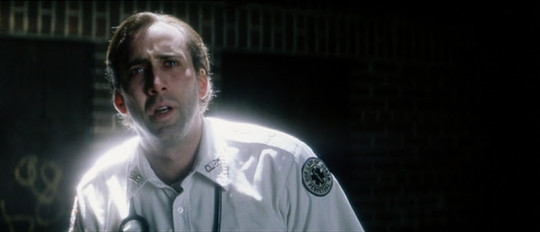
24. Bringing Out the Dead (1999)
Nicolas Cage was gearing up for the run that most people know him for now during the release of Bringing Out the Dead : he was coming off of Golden Globe and Academy Award wins for Leaving Las Vegas, but was quickly leaning towards films of a more exploitation-based style. This film marked a refinement of his wild-man persona, while simultaneously being one of the last high-level actor/director combinations he would be involved in before his mad dash to accept every film and avoid bankruptcy. New York is captured in a mid-transition point between the darkness of the 1970s and 1980s versus the Disney aesthetic of the new millennium, and while heavy on the entertainment factor (as well as visually striking), there is ultimately not enough on this plate to push it higher up the list.
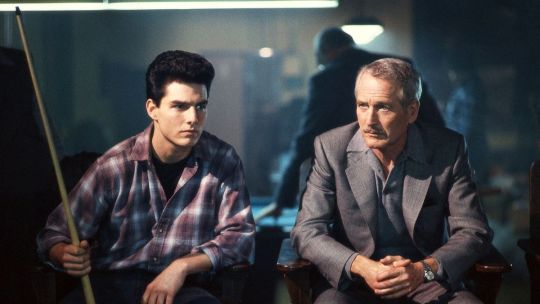
23. The Color of Money (1986)
If you had to do a quick gander at the Scorsese list and pick the film that, on paper, screams Hollywood, it’d be hard to argue against The Color of Money taking that top spot. A soft sequel to The Hustler, Scorsese picks up the Fast Eddie story in the 1980s (an era that oozes out of each and every frame of this film), and yet, despite this legendary move, the film is ultimately the Tom Cruise show. Scorsese’s trademark dollying and trucking camera shots work beautifully in the context of this film, but in a story that shines bright, the star of Cruise ultimately outshines all that remains.

22. Alice Doesn't Live Here Anymore (1974)
After a few exploitation-based projects, it seemed that Martin Scorsese wanted to provide a slightly different change in perspective, albeit one that still dwells in the darker corners of life. Rather than deal with the streets of New York or crime, Alice Doesn’t Live Here Anymore is a study on broken homes, single parenthood and domestic violence that oscillates between the view of the titular Alice and her young son. Harvey Keitel gives another strong performance as a Scorsese regular, while Ellen Burstyn shines in a transitional role towards more mature performances. Seeing Scorsese camera movements coopted into a more down to Earth story was refreshing.
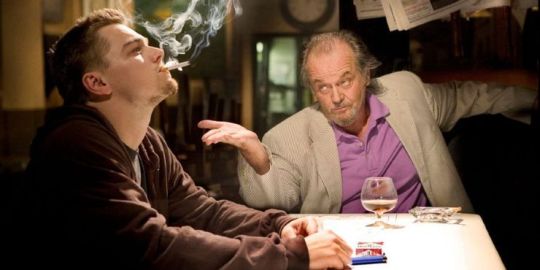
21. The Departed (2006)
Many people would have assumed that The Departed would be higher on a list of Scorsese films based solely on the cast... pairing Leonardo DiCaprio opposite Matt Damon in a tension-filled triangle with Jack Nicholson is a bold combination in its own right, but surrounding this nucleus with Martin Sheen, Mark Wahlberg, Alec Baldwin, Kevin Corrigan, Anthony Anderson and supporting actors of that ilk creates a rich showcase of talent. Stylistically, everything you need is there too, as Scorsese proved time and again that films of this nature were his wheelhouse. That being said, the story itself, an adaptation of the 2002 Hong Kong thriller Infernal Affairs, takes a few liberties in its adaptation that ultimately are to the detriment of the narrative. Kudos to Scorsese for putting this one together, and too bad for him that the choices of William Monahan knocked what could have been a mega-classic way down the list.

20. New York, New York (1977)
New York, New York is one of the most unique offerings from the Scorsese canon for a number of reasons. Of all his films, this one is probably the one that can be considered a “style exercise” more than the rest, as it oscillates between obvious sets and real locations before blurring the lines between the two. Long gaps of time are given to fully executed musical numbers (a must when a talent like Liza Minnelli is involved), and traditional methods of songwriting and performance are given their due respect. The exercise portion, however, comes in the newer acting styles that are infused into the old school structure... improvisation and aggressive physicality are used to put a deeper, disturbing red tint on an era often presented through a rose-colored lens. While interesting at times, the nearly three hour run time of the film begins to wear on the limits of the style, which ultimate leaves the film feeling more like a personal indulgence than a statement on changing times. For the iconic title track alone (and the buildup to its release), this film is worth seeing, but in terms of its placement in the realm of other Scorsese films, it may have to grow on me a while to find a higher placement on the list.

19. Boxcar Bertha (1972)
Originally, this film was much lower on the list, largely due to its chronological placement between Who’s That Knocking at My Door and Mean Streets seeming odd to me. Upon revisitation, however, it stands clear and present that this film served as an exercise in the process of directing and organizing a shoot. With its period-specific placement, ensemble cast and action sequences, it was bound to be compared to (and ultimately overshadowed by) the formidable Bonnie and Clyde, but Boxcar Bertha has a few key moments in it (including a stellar final action sequence) that places it near the middle of the Scorsese canon, even with it being his second film.

18. Who's That Knocking at My Door? (1967)
For all of the refinement that Scorsese found in his second film, his debut film, the stunning Who’s That Knocking at My Door?, stands as testament to the fact that Scorsese brought his many gifts to the table from day one. What started as a student graduate film grew into a speculative project, only to find 25th hour funding that allowed it a festival run and a proper release. The film took many years to complete and release, to the point that keen viewers will notice Harvey Keitel’s boyish, soft good looks morph into the sharper, edgier intense profile we came to recognize in Mean Streets and the films that followed. The energetic cinematography, respect of film as a medium, stellar music choices, defiance of youth, toxic masculinity and realistic look at relationships are all here, making this debut a hidden gem in the Scorsese canon.

17. The Wolf of Wall Street (2013)
Seeing Scorsese retread old stylistic ground (as opposed to infusing his style into newer projects) is an interesting take, and for what my opinion is worth, The Wolf of Wall Street feels like Goodfellas for white collar criminals. In theory (and, in some aspects of the film, in reality), the experiment does work, but ultimately, this film finds its placement in the middle realms simply because we are given infinite sizzle off of what amounts to a very thin steak. Goodfellas works because it is carried by the weight of omerta, but The Wolf of Wall Street focuses on a culture where status comes from self-appointed importance, which ultimately makes for an attempted redemption story for despicable people.
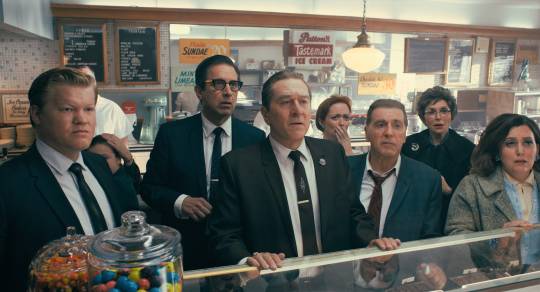
16. The Irishman (2019)
Seeing actors the stature of Robert De Niro, Joe Pesci and Al Pacino combine forces for a film is always a major event, but until 2019, those combinations have been limited to duos. When Netflix announced its intention to release The Irishman in 2019, people were not only intrigued on Scorsese’s take on the Jimmy Hoffa story, but seeing De Niro, Pesci and Pacino in the same film for the first time. For what it was worth, the trio lived up to all expectations, with the only bittersweet criticism being wishes that the three could have found a way to work together prior to the twilight of their careers. The historical drama is high quality, with Hoffa’s larger than life persona captured perfectly by Pacino, and bolstered by the dramatic chops brought to the table by De Niro and Pesci. The film is a tad on the long side, and the de-aging process tips into the realm of the uncanny valley due to the older actors’ physicality, but for a 25th film 52 years into an illustrious career, The Irishman must be recognized for the triumph that it is.
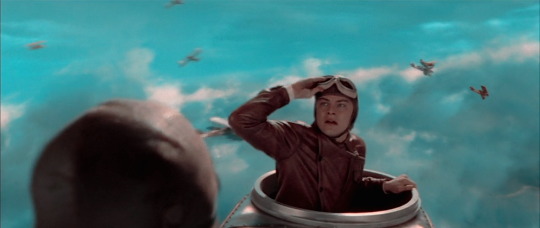
15. The Aviator (2004)
Much like The Wolf of Wall Street, I avoided The Aviator for years simply because I have no interest or fascination with Howard Hughes. I was very much aware of his financial stature, his innovations as an aviator, his rocky love life and his personal demons that plagued him, but for my money’s worth, I was fine without seeing it presented on the big screen. In an effort to cover all the bases for a director I hold in high esteem, however, I made the decision to finally check out The Aviator, and for every element of the film I previously had no interest in, an element was presented that won me over. Cate Blanchett and Adam Dunn put on two of the strongest performances in the entire realm of Scorsese films, and the XF-11 crash sequence is possibly one of the grandest and well executed in any Scorsese film. Leave it to Martin Scorsese to make a powerful film about an individual I care nothing about and nearly crack the top ten with that effort.

14. Hugo (2011)
Up to the point of watching Hugo, I knew nothing about it. About halfway through Hugo, I had to stop and look up how the film was received, as it was simply stunning, and sure enough, it was a monster in terms of award nominations and wins. I never would have pegged Scorsese as the type to direct a kid’s film, but in all honesty, that ‘kid’s film’ title is used as a façade for a love letter to film in general, and the groundbreaking work of Georges Méliès specifically. The look of the film is otherworldly, the energy is light, kinetic and infectious, and even a mostly slapstick performance by Sacha Baron Cohen yields surprising emotional depth when given the opportunity to do so. While just missing the top ten, Hugo easily stands as the number one surprise on this list in terms of pre-viewing expectations (of which there where none) versus post-viewing thoughts (of which there are many). Knowing that Hugo exists lets me know that one day, if I have children, and they want to know why I love film so much, I will have a film on the level of Cinema Paradiso to share with them and (hopefully) help foster a love of film they can call their own.
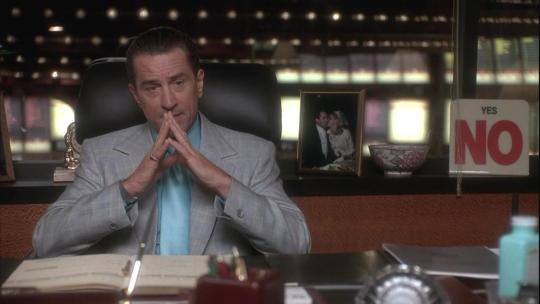
13. Casino (1995)
For a time, this film stood as the last work containing the vibrant combination of Martin Scorsese, Robert De Niro and Joe Pesci, a trio of high energy creatives known for putting their all into their projects. Casino felt like a spiritual successor to Goodfellas, focusing on a lavish but secretive lifestyle with high stakes and even higher consequences. An instantly iconic movie, Casino felt like the end of an era in regards to gangster fare for Scorsese, opting instead for more challenging projects, adaptations of other books and films, or personal passion projects. It would be nearly 25 years later before Scorsese would touch similar subject matter or work with these actors again, but had Casino been the last of Scorsese’s so-called “gangster” films, I believe the world would have been happy with that.

12. Kundun (1997)
To make one religious-based film in a career is a bold move to some, but I am hard-pressed to think of any director that made films on two different religions who didn’t explicitly make religious films. With that in mind, it is incredibly impressive that Martin Scorsese was able to make a film as moving and objective as Kundun after making such a bold take on religion as The Last Temptation of Christ. The film centers around the discovery, growth and eventual escape to India in light of growing aggression from China. In all honesty, I had my doubts as to whether or not the Scorsese style would work for this story, especially in light of the lack of cooperation from Tibet and China, but somehow, Scorsese’s amazing signature camerawork captures the unique spirit and essence surrounding the Dalai Lama. I’d heard of this film for years, but never got around to it until it was time to make this list, but I will almost certainly try to find a copy to own in the near future.

11. The King of Comedy (1982)
What an odd left turn in regards of career trajectory for both Scorsese and De Niro. With three collaborations already under their belt (not to mention The Godfather II already being a well-established classic), it would have been easy to imagine the duo putting another notch on the gangster film genre belt. What we are given, however, is the yang to the yin of Taxi Driver : our protagonist is a statement on personal conviction and the trappings of instant stardom, our antagonist is a statement on star fascination and the high costs of celebrity, and our satellite characters directly reflect the toxicity certain fandoms can be capable of. Scorsese sets aside his normal flourish and camera moves for a mixing of film and video mediums, as well as a completely new sense of freedom in regards to the highly improvised nature of the film. Its influence on recent successful films like Joker is undeniable, but I’d argue that Joker lacks the heart, sincerity and realistic bite present in The King of Comedy.
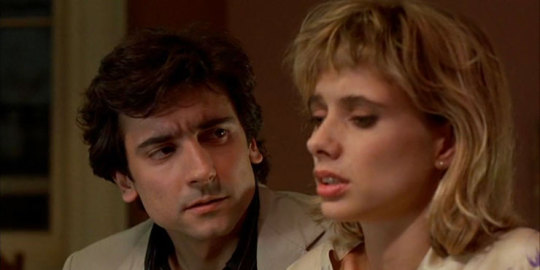
10. After Hours (1985)
Of all the “new to me” Scorsese flicks I finally viewed while preparing this list, After Hours stands as my favorite discovery of the bunch. I was marginally familiar with the film, both from my younger days in video stores and from friend recommendations, but for some reason, when Scorsese time arrived, After Hours seemed to never be on the docket. That oversight, however, will now be a thing of the past. This film feels like a personal challenge to Woody Allen in regards to how one should make a New York-based romantic comedy, and I’d be hard pressed to share any shortcomings or failures present in this comedic masterpiece. One of the few films that can be both a product of its era and a timeless classic, and one that should be much more recognized in the Scorsese canon.
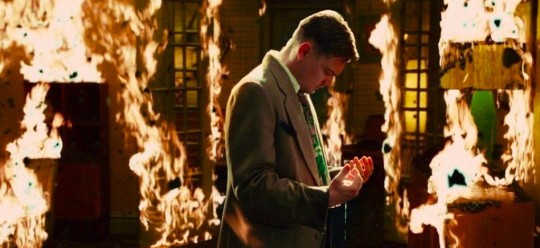
9. Shutter Island (2010)
Me hesitating or not getting around to Scorsese films seems to be a bit of a common theme here, but there was literally no excuse for me to take this long to get around to Shutter Island. Despite knowing the premise of the story (and even having the ending somewhat spoiled for me), I still found the impact of the final moments just as powerful as I imagine I would have going into this film blind. Some people will likely argue this statement, but in my opinion, this was the best Leonardo DiCaprio performance captured by Martin Scorsese. The asylum setting is wonderfully bleak, and the psychological horrors it infers create a vibrant playground for some of the most stunning visual symbolism that Scorsese has ever committed to film. Don’t be like me if you’ve not gotten around to Shutter Island yet, because it’s a thrill ride more than worth the price of admission, and a rewarding repeat viewer.
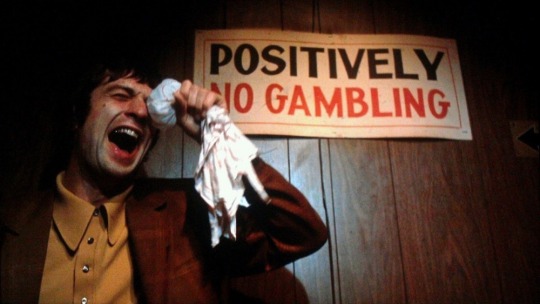
8. Mean Streets (1973)
Mean Streets may have been Martin Scorsese’s third film, but for many fans, it was the first true indicator of the brilliance that was to come. A true New York film through and through, it not only presented fans with a stronger Harvey Keitel performance than Who’s That Knocking at My Door?, but it introduced the world to the palatable tandem of Scorsese and De Niro that would go on to lead to years and years of iconic performances. The use of altering aspect ratios is something that I wish Scorsese would have continued to use more often, but in all honesty, Mean Streets has style to spare. This the film that I love to recommend when people start ranting and raving about Goodfellas, and more often than not, it impresses those unfamiliar with it just as much.

7. The Age of Innocence (1993)
Martin Scorsese’s love of film is widely known and well documented, but The Age of Innocence goes an additional step further by displaying Scorsese’s love of art. The film also is one of the most touching displays of unrequited love that Scorsese has committed to film, a slight alteration from his normal infusion of love stories trying to sustain in the surrounding chaos of gangs, crime, religion and so on. Daniel Day-Lewis, Michelle Pfeiffer and Winona Ryder all give standout performances in this masterfully directed film. If Gangs of New York was meant to be the definitive old school New York film in the Scorsese canon, then The Age of Innocence is the unintended definitive New York film from Scorsese, with some European touches thrown in for good measure.

6. Cape Fear (1991)
Of the many, many iconic performances that Robert De Niro has given Martin Scorsese, I’d be hard pressed not to put his characterization of Max Cady at the top by a clear margin. Cape Fear was already a classic film adaptation of The Executioners when it was first released in 1957, but De Niro pulled two fast ones with his update : in terms of casting, especially with the aforementioned De Niro, Scorsese brought the harrowing story into a much darker, recent world, therefore increasing the tension by upping the ante for violent retribution, while at the same time, paying direct homage to the original by having Elmer Bernstein adapt the original Bernard Herrmann score. Juliette Lewis also provided a breakout performance in this modern day classic, and possibly the film that provided the most tense debate in terms of placement, as we will get into with the next film.
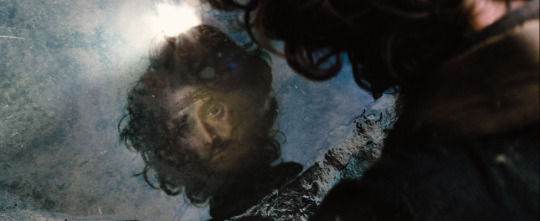
5. Silence (2016)
Despite being one of the most recent Martin Scorsese films, this one’s limited release meant that I missed it during its initial run, and the lack of streaming service placement essentially erased it from my memory. I was certainly intrigued about watching it for this list, and it ended up being the last film viewed. Going into it, it felt like a sort of religious take on Saving Private Ryan, but it didn’t take long for the film to start dealing out much heavier cards in terms of faith, belief systems and cross-cultural contamination. The Last Temptation of Christ showed that Scorsese could find nuance and secular drama from a holy tale, and Kundun showed that he could make a religious icon a relatable human figure struggling to grasp his divine appointment. Silence is the work of a wise, steady hand, however, like some sort of cinematic parable or testament to faith in the face of crippling doubt and danger. Scorsese is certainly still moved by the idea of faith, and he uses Andrew Garfield to display this in some of the most powerful moments that he has ever created or captured for his films. For those who have not seem the film, this placement may feel a bit high, but I would not be surprised if, given time and proper amounts of reflection, it makes its way higher.
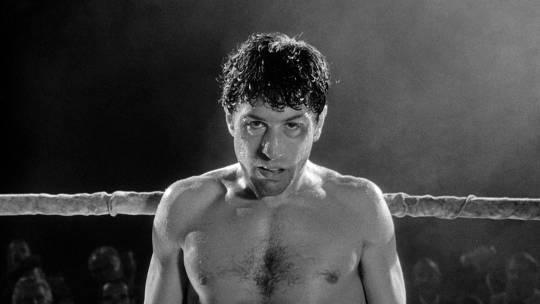
4. Raging Bull (1980)
The placement of Raging Bull and Cape Fear was the biggest hurdle I was forced to overcome in the creation of this list. Robert De Niro is powerfully captivating in both films, though I would personally give his performance as Max Cady the nod over his embodiment of Jake LaMotta, but when it comes down to the brass tacks of it all, Raging Bull is ultimately the better of the two films. The raw, black and white look of LaMotta’s life already provides a gritty, unflattering portrait of a savage and uncouth man looking for beauty in the world, but that beauty he searches for appears in the boxing sequences with no apologies. The airy look, mainly caught by dynamic slow motion photography, works in tandem with the abrasive first-person views of the combatants, not to mention the direct nature of the combat itself as the viewer is often placed directly in the line of fire. The involvement of the real LaMotta within the film provides a nice button to the superb acting put on display by De Niro, Joe Pesci, Cathy Moriarty and the numerous actors used to portray the opponents of LaMotta.
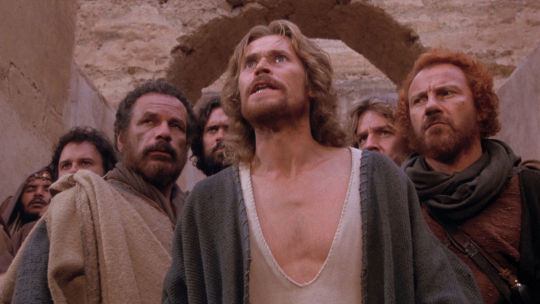
3. The Last Temptation of Christ (1988)
Call it a trope if you like, but it feels like every great (or aspiring) director has a film in them that is driven by religion in some capacity. The Last Temptation of Christ is unique in this sense because it takes the story of the accusations, betrayal, trial and eventual crucifixion of Jesus and turns it into a deeply faith-based suspense thriller. Many of the familiar beats we know from the Bible are re-contextualized as visions, mystic tests of faith, carnal desires driven by lust, and nihilistic views infringing upon deep indoctrination. Willem Dafoe plays a Jesus that is bitter in his acceptance of his fate, Harvey Keitel plays a wonderfully opportunistic Judas, and Barbara Hershey plays a very modernized version of a woman forced to use her body for survival that is suddenly trapped between necessity and passion. The film hinges on the verge of becoming a soap opera without falling into the trappings that come with such high drama, and the walkup to the film’s amazing final sequence puts you in the emotional passenger's seat while Jesus takes the wheel and steers directly into his fate. A dramatically powerful yet brutally sincere take on an iconic, revered and sensitive subject matter.
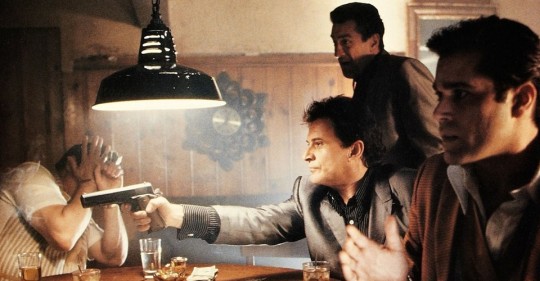
2. Goodfellas (1990)
Is there any original praise left to bestow upon this movie? To focus on the imperfections of this film is an act of futility, as they are mostly non-existent. Some of Martin Scorsese’s best examples of his iconic camera movement, editing techniques, still frames, writing gleaned from personal experience, soundtrack use, loose historical connections and dark humor are found within the confines of Goodfellas. If you’ve seen in actor in any television show or film that had any connection to the mob prior to Goodfellas or since, it is more than likely that that actor was in Goodfellas, even if only briefly. Using Henry Hill as both an outsider and insider perspective is a brilliant narrative stroke, as he can get close to the top, but can never have it all, making him essentially a fly on the wall bursting with charisma and personality. They highs are as epic as the lows are tragic, and for most people, it is the first film that comes to mind when the name Martin Scorsese is mentioned. This could have very easily been the number one film on my list, but anyone who has been visiting this blog with a keen eye for detail probably figured out my favorite Scorsese film the first time they visited the DOOMonFILM blog.
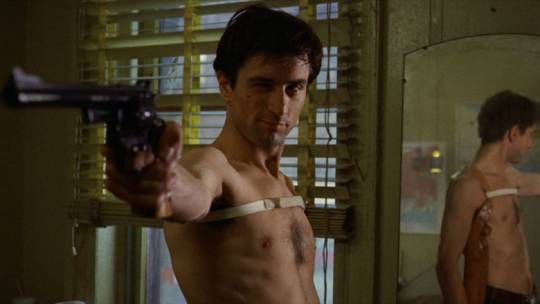
1. Taxi Driver (1976)
Since the day that I started this film blog, there has been one image at the top of the page : Travis Bickle in the porn theater (with his face replaced by my logo) from the iconic Taxi Driver. There’s not a single element that I can put my finger on for this film, but there are certainly a number of elements that do speak to me : the isolation that Travis faces, the journal-like narration that drives the story forward, the hypnotic nature of both Bernard Herrmann score and the repetitive taxi cab shots and the vivid camera movements are all burnt firmly into my brain. Everyone that makes up the main cast for this film kills in their performance, and the ending of the film is not only a brutal one, but an ironic one in regards to where Travis lands in the eyes of those who make up the world of the film. Martin Scorsese has made more amazing films than some directors have made, period (amazing or otherwise), but for my money’s worth, none of them are as powerful or well put together as Taxi Driver.
#ChiefDoomsday#DOOMonFILM#MartinScorsese#Who'sThatKnockingAtMyDoor#BoxcarBertha#MeanStreets#AliceDoesn'tLiveHereAnymore#TaxiDriver#NewYorkNewYork#RagingBull#TheKingOfComedy#AfterHours#TheColorOfMoney#TheLastTemptationOfChrist#Goodfellas#CapeFear#TheAgeOfInnocence#Casino#Kundun#BringingOutTheDead#GangsOfNewYork#TheAviator#TheDeparted#ShutterIsland#Hugo#TheWolfOfWallStreet#Silence#TheIrishman
13 notes
·
View notes
Text
The Cinematic Legacy of Lupin: Arsène Lupin’s Live-Action Filmography
https://ift.tt/2ToNPSY
When Netflix premiered the first season of Lupin last January, 70 million sheltered-in-place households ravenously binged it, making the series the most-watched non-English show for its premiere month on the streamer so far. Lupin steals a page from French literature. The hero of Lupin, Assane Diop (Omar Sy) is inspired by France’s iconic ‘Gentleman Thief’ Arsène Lupin, a fictional figure created by French writer Maurice Leblanc in 1905.
Lupin was the subject of some two dozen books by Leblanc, who continued adding into his literary franchise until well into the 1930s. Akin to Robin Hood, Lupin stole from the rich, and often did good deeds despite his thieving capers. He was a master of deception and disguise, a lady killer who always operated with a classy panache. With a legacy spanning more than a century, there have been plenty of live-action depictions in film and TV.
The First Lupin Films are Over a Hundred Years Old
The earliest cinematic portrayals of Lupin were in black and white, and many have been lost. One of the very first was a U.S. production, a short film titled The Gentleman Burglar in 1908. William Ranows, a veteran of over sixty films, played Lupin. It was directed by one of the first film directors ever, Edwin Porter, who worked for Edison.
Leblanc was a contemporary of Sir Arthur Conan Doyle, the creator of Sherlock Holmes. Consequently, Holmes appears in a few Lupin stories. Doyle took legal action against Leblanc, forcing the name change in Lupin stories to the thinly disguised ‘Herlock Sholmes.’ As Holmes is loved by the British, Lupin is cherished by the French, and both characters became global icons. Consequently, among the many film and TV adaptations, several that depicted their rivalry regardless of copyright issues. In 1910, a German film serial titled Arsène Lupin contra Sherlock Holmes starred Paul Otto as Lupin and Viggo Larsen as Holmes (Larsen also served as director.) There were allegedly five installments in the series, but they’ve all been lost.
France produced Arsène Lupin contre Ganimard in 1914 with Georges Tréville as Lupin (Inspector Ganimard was constantly on Lupin’s trail). The silent film Arsène Lupin came out of Britain in 1916 with Gerald Ames in the titular role, followed by more U.S. productions: Arsène Lupin (1917) starring Earle Williams, The Teeth of the Tiger (1919) with David Powell, which is also lost, and 813 starring Wedgwood Nowell. 813 was the title of Leblanc’s fourth Lupin book.
Lupin and the Barrymore Clan of Actors
The legendary thespian John Barrymore played Lupin in 1932’s Arsène Lupin. He took on the role under one of Lupin’s aliases, the Duke of Charmerace. His brother, Lionel Barrymore, played another Lupin nemesis, Detective Guerchard. Given the illustrious cast, this is a standout Lupin film, although there isn’t a shred of Frenchness in Barrymore’s interpretation. Coincidentally, John Barrymore also played Holmes in Sherlock Holmes a decade earlier. He is also the grandfather of Drew Barrymore.
Barrymore’s Arsène Lupin revolved around the theft of the Mona Lisa from the Louvre. Historically, the Da Vinci masterpiece was stolen in 1911 and recovered in 1913. This inspired a Lupin short story, a parody akin to early fanfiction that was not written by Leblanc. In 1912, mystery writer Carolyn Wells published The Adventure Of The Mona Lisa which imagined Holmes and Lupin to be part of the International Society of Infallible Detectives alongside A. J. Raffles, Monsieur Lecoq, and other crime-solving luminaries. Barrymore’s Arsène Lupin does not retell this tale, but the theft of the Mona Lisa comes up again in other Lupin films because it’s France so robbing the Louvre is a common plot point. Netflix’s Lupin begins with Diop’s heist of the Queen’s necklace from the Louvre, an Easter egg referring to Leblanc’s original Lupin short story, ‘The Queen’s Necklace’ published in 1906.
The ‘30s delivered two more Lupin films. The French-made Arsène Lupin detective (1937) starred Jules Berry as Lupin and the American-made Arsène Lupin Returns (1938) with Melvyn Douglas who was credited under another Lupin alias Rene Farrand (Lupin has a lot of aliases). Despite being a completely different production, Douglas’ film was an attempt to capitalize on the success of Barrymore’s film as both films were from MGM. Universal Studios entered the fray soon after with their version Enter Arsène Lupin (1944) starring Charles Korvin. The following year, the Mexican-made Arsenio Lupin (1945) featured Ramón Pereda as the French thief. That film also starred José Baviera as Sherlock.
The Early Japanese Lupin Adaptations
Lupin captured the hearts of the Japanese. Ironically, Japanese speakers have a difficult time pronouncing ‘L’s so Lupin is usually renamed as ‘Rupan’ or ‘Wolf’ (Lupine means wolf-like – remember Remus Lupin from Harry Potter). As early as 1923, Japan also delivered a silent version of 813, retitled Hachi Ichi San, starring Komei Minami as the renamed Lupin character of Akira Naruse.
In the ‘50s, Japan produced 3 films that credit Leblanc: Nanatsu-no Houseki (1950) with Keiji Sada, Tora no-Kiba (1951) with Ken Uehara, and Kao-no Nai Otoko (1955) with Eiji Okada. However, post-WWII Japan has obscured most of the details on these films. Like Hachi Ichi San, these Japanese versions laid the foundations for the Lupin III, which debuted as a manga in 1967 and spawned a major manga and anime franchise. In karmic retribution for Leblanc poaching Sherlock, Japan stole Lupin. Lupin III was Arsène Lupin’s grandson.
Notably, the second Lupin III feature film, The Castle of Cagliostro, marked the directorial debut of famed animator Hayao Miyazaki and is considered a groundbreaking classic that inspired Pixar and Disney (Disney’s The Great Mouse Detective (1986) pilfered the finale clockwork fight from The Castle of Cagliostro). In the wake of the anime Lupin III Part I (1971), Japan produced some anime films that were more loyal to Leblanc, notably Kaitō Lupin: 813 no Nazo (1979) and Lupin tai Holmes (1981). However, this article is focused upon live-action adaptations. Lupin III is another topic entirely.
In the late ‘50s and into the ‘70s, France reclaimed her celebrated son. Robert Lamoureux became Lupin for two films, Les aventures d’Arsène Lupin (1957) and Signé Arsène Lupin (1959). A comedy version pitted rival sons of Lupin against each other in Arsène Lupin contre Arsène Lupin (1962). Playing the Lupin brothers were Jean-Pierre Cassel and Jean-Claude Brialy.
Lupin on the Small Screen
Read more
TV
From Lupin III to Inspector Gadget: Examining the Heirs of Arsène Lupin
By Natalie Zutter
France also delivered several TV series. Arsène Lupin ran from 1971 to 1974 and starred Georges Descrières. It encompassed 26 60-minute episodes. L’Île aux trente cercueils (1979) is often included in Lupin filmographies because it is based on a Leblanc novel published in 1919 in which Lupin makes a guest appearance. However, he was omitted from this six-episode miniseries, so it doesn’t quite count. Arsène Lupin joue et perd (1980) was another six-episode miniseries loosely based on ‘813’ with Jean-Claude Brialy from the 1962 comedy.
One more French TV show, Le Retour d’Arsène Lupin, was televised in two seasons, 1989-1990 and 1995-1996. These were 90-minute episodes with 12 in season 1 and eight in season 2. François Dunoyer starred as Lupin.
And in 2007, the largest Lupin TV show ran for a whopping 96 episodes plus one special. Lupin was made in the Philippines no less, starring Richard Gutierrez as André Lupin
Lupin in the Last Decade
In 2011, Japan delivered one more live-action film Lupin no Kiganjo starring Kōichi Yamadera. Based on Leblanc’s 3rd Lupin book, L’aiguille Creuse, the film is reset in modern Japan.
In the strangest permutation of Japanese Lupins, Daughter of Lupin was a TV series that is an odd hybrid of Lupin III and Leblanc’s work. A campy sitcom in the tradition of Romeo and Juliet, Hana (Kyoko Fukada) comes from a family of thieves known as the L clan who are inspired by Lupin. Her lover, Kazuma (Koji Seto), is from a family of cops. When in thief mode, Hana wears a carnival mask and a velvet catsuit. It’s goofy, sort of a live action version of anime. It ran for two seasons in 2019 and 2020.
The Lupin Adaptation You Should See
The strongest modern adaptation of Leblanc’s iconic burglar is the period film Arsène Lupin (2004). It’s an actioner, a creation story for Lupin, starting from his childhood and moving rapidly to him becoming a master gentleman thief. Romain Duris plays the titular role, and the film is in French. Backing Duris are veteran actresses Kristin Scott Thomas as Comtesse de Cagliostro and Eva Green as Clarisse de Dreux-Soubise. The story is absurd, like a mash-up between a superhero film and the DaVinci code, and it gets a bit muddled in the telling. However, it’s shot on location (including the Louvre) and encapsulates the spirit of Leblanc’s character in an updated fashion. It’s a perfect primer for Lupin Season 2.
cnx.cmd.push(function() { cnx({ playerId: "106e33c0-3911-473c-b599-b1426db57530", }).render("0270c398a82f44f49c23c16122516796"); });
Lupin seasons 1 and 2 are available to stream on Netflix now.
The post The Cinematic Legacy of Lupin: Arsène Lupin’s Live-Action Filmography appeared first on Den of Geek.
from Den of Geek https://ift.tt/2U0px1N
4 notes
·
View notes
Text
Mothman
Mothman
Background:
West Virginia
The first reported sighting of the creature we know as Mothman was on November 12, 1966 in Clendin, West Virginia. Depending on the source, one to five gravediggers spotted a figure moving from, tree to tree in the graveyard they were working in. Three days later, in Point Pleasant, West Virginia, two couples were out on the edges of town driving. The Scarberrys and Mallettes saw the creature in the dark, it’s eyes glowing red when the lights from their car hit them. The couples drove quickly back to the town. Supposedly the creature followed all the way to the outskirts of town before it disappeared into a nearby field. The couples later went to the police and described the creature as “a winged creature 6-7 ft. tall, bright red eyes about 6 in. apart, a 10 ft. wing span, able to fly as quick as 100 mph, and a clumsy ground runner”. Throughout the next three days, eight more sightings were reported. On December 15, 1967, the Silver Bridge collapsed and killed 46 people. Leading up to the collapse UFO sightings supposedly occurred in the surrounding areas. This began the legend that Mothman is a harbinger of doom.
Illinois
On July 25, 1977, the creature or a creature similar to it was sighted in Illinois for the first time. A woman in Logan County reported that while watching her kids play in the back yard two giant birdlike creatures attacked her family. Apparently one of the creatures snatched up her son and carried him several yards away. In Illinois, the sightings continues increasing, many occurring in Chicago between 2017 and 2019. In 2017, 55 sightings were recorded. In November 2019, the most recent sighting occurred. A truck driver at O’Hare International Airport was outside smoking a cigarette when he spotted what he described as looking “like a person with wings that were stretched out and flapping” standing by the fence. Could it possibly be that Mothman was warning the citizens of Chicago or the upcoming trials they would be facing In 2020?
Other reported sightings of Mothman or a similar creature occurred around the same time and place as the 1986 Chernobyl Disaster, the 2009 Mexican Swine flu outbreak, and the 2011 nuclear disaster in Fukushima, Japan.
*Supposedly there was a Mothman sighting in Prince William in Virginia, but I was unable to confirm this. *
Theories:
· Sandhill Crane:
§ 2.5-4 ft. tall
§ Grey plumage
§ Red flesh around the eyes
§ Average wingspan of 7 ft.
§ Similar sounds to Mothman
§ No confirmed sightings in West Virginia but are very frequent in Illinois
§ Known to migrate to the west coast during the winter
§ Living in the “TNT Area” could’ve possibly mutated it
§ It would have likely been found by now
§ Doesn’t match full description of Mothman
· Prank:
§ Could possibly be a prank that got out of hand
§ No one’s come out saying they are
§ How has it been seen across the world if this is the case?
§ Could’ve caused a mass hysteria affect
· Mass Hysteria:
§ Looks similar to a sleep paralysis demon
§ More recent sightings reported by people who have heard or are fans of Mothman
§ Could be people letting their imaginations get the best of them
§ There is quite a large quantity of reports though
· Interdimensional/Ultra-Terrestrial:
§ Def.: A being that commands time and space and can jump from one dimension to another
§ Plays into the Multiverse Theory
§ Could explain why no one’s caught him
§ Explains appearance
§ Could tie Mothman to other cryptids as this is a common theory
§ Could be coming to warn of disasters
§ Personal favorite theory
#mothman#cryptids#cryptid#cryptid research#research paper#cryptid theory#mothman theories#mothman research
4 notes
·
View notes
Text
Events 11.21
164 BCE – Judas Maccabeus, son of Mattathias of the Hasmonean family, restores the Temple in Jerusalem. This event is commemorated each year by the festival of Hanukkah.
235 – Pope Anterus succeeds Pontian as the nineteenth pope. During the persecutions of emperor Maximinus Thrax he is martyred.
1009 – Lý Công Uẩn is enthroned as emperor of Đại Cồ Việt, founding the Lý dynasty.
1386 – Timur of Samarkand captures and sacks the Georgian capital of Tbilisi, taking King Bagrat V of Georgia captive.
1620 – Plymouth Colony settlers sign the Mayflower Compact (November 11, O.S.)
1676 – The Danish astronomer Ole Rømer presents the first quantitative measurements of the speed of light.
1783 – In Paris, Jean-François Pilâtre de Rozier and François Laurent d'Arlandes, make the first untethered hot air balloon flight.
1789 – North Carolina ratifies the United States Constitution and is admitted as the 12th U.S. state.
1861 – American Civil War: Confederate President Jefferson Davis appoints Judah Benjamin Secretary of War.
1877 – Thomas Edison announces his invention of the phonograph, a machine that can record and play sound.
1894 – Port Arthur, China, falls to the Japanese, a decisive victory of the First Sino-Japanese War; Japanese troops are accused of massacring the remaining inhabitants.
1902 – The Philadelphia Football Athletics defeated the Kanaweola Athletic Club of Elmira, New York, 39–0, in the first ever professional American football night game.
1905 – Albert Einstein's paper that leads to the mass–energy equivalence formula, E = mc², is published in the journal Annalen der Physik.
1910 – Sailors on board Brazil's warships including the Minas Gerais, São Paulo, and Bahia, violently rebel in what is now known as the Revolta da Chibata (Revolt of the Lash).
1916 – Mines from SM U-73 sink the HMHS Britannic, the largest ship lost in the First World War.
1918 – The Flag of Estonia, previously used by pro-independence activists, is formally adopted as the national flag of the Republic of Estonia.
1918 – The Parliament (Qualification of Women) Act 1918 is passed, allowing women to stand for Parliament in the UK.
1918 – A pogrom takes place in Lwów (now Lviv); over three days, at least 50 Jews and 270 Ukrainian Christians are killed by Poles.
1920 – Irish War of Independence: In Dublin, 31 people are killed in what became known as "Bloody Sunday".
1922 – Rebecca Latimer Felton of Georgia takes the oath of office, becoming the first female United States Senator.
1927 – Columbine Mine massacre: Striking coal miners are allegedly attacked with machine guns by a detachment of state police dressed in civilian clothes.
1942 – The completion of the Alaska Highway (also known as the Alcan Highway) is celebrated (however, the highway is not usable by standard road vehicles until 1943).
1944 – World War II: American submarine USS Sealion sinks the Japanese battleship Kongō and Japanese destroyer Urakaze in the Formosa Strait.
1945 – The United Auto Workers strike 92 General Motors plants in 50 cities to back up worker demands for a 30-percent raise.
1950 – Two Canadian National Railway trains collide in northeastern British Columbia in the Canoe River train crash; the death toll is 21, with 17 of them Canadian troops bound for Korea.
1953 – The Natural History Museum, London announces that the "Piltdown Man" skull, initially believed to be one of the most important fossilized hominid skulls ever found, is a hoax.
1959 – American disc jockey Alan Freed, who had popularized the term "rock and roll" and music of that style, is fired from WABC radio over allegations he had participated in the payola scandal.
1961 – The "La Ronde" opens in Honolulu, first revolving restaurant in the United States.
1962 – The Chinese People's Liberation Army declares a unilateral ceasefire in the Sino-Indian War.
1964 – The Verrazano-Narrows Bridge opens to traffic. At the time it is the world's longest bridge span.
1964 – Second Vatican Council: The third session of the Roman Catholic Church's ecumenical council closes.
1967 – Vietnam War: American General William Westmoreland tells news reporters: "I am absolutely certain that whereas in 1965 the enemy was winning, today he is certainly losing."
1969 – U.S. President Richard Nixon and Japanese Premier Eisaku Satō agree on the return of Okinawa to Japanese control in 1972. The U.S. retains rights to bases on the island, but these are to be nuclear-free.
1969 – The first permanent ARPANET link is established between UCLA and SRI.
1970 – Vietnam War: Operation Ivory Coast: A joint United States Air Force and Army team raids the Sơn Tây prisoner-of-war camp in an attempt to free American prisoners of war thought to be held there.
1971 – Indian troops, partly aided by Mukti Bahini (Bengali guerrillas), defeat the Pakistan army in the Battle of Garibpur.
1972 – Voters in South Korea overwhelmingly approve a new constitution, giving legitimacy to Park Chung-hee and the Fourth Republic.
1974 – The Birmingham pub bombings kill 21 people. The Birmingham Six are sentenced to life in prison for the crime but subsequently acquitted.
1977 – Minister of Internal Affairs Allan Highet announces that the national anthems of New Zealand shall be the traditional anthem "God Save the Queen" and "God Defend New Zealand".
1979 – The United States Embassy in Islamabad, Pakistan, is attacked by a mob and set on fire, killing four.
1980 – A deadly fire breaks out at the MGM Grand Hotel in Paradise, Nevada (now Bally's Las Vegas). Eighty-seven people are killed and more than 650 are injured in the worst disaster in Nevada history.
1985 – United States Navy intelligence analyst Jonathan Pollard is arrested for spying after being caught giving Israel classified information on Arab nations. He is subsequently sentenced to life in prison.
1986 – National Security Council member Oliver North and his secretary start to shred documents allegedly implicating them in the Iran–Contra affair.
1992 – A major tornado strikes the Houston, Texas area during the afternoon. Over the next two days the largest tornado outbreak ever to occur in the US during November spawns over 100 tornadoes.
1995 – The Dayton Agreement is initialed at the Wright-Patterson Air Force Base, near Dayton, Ohio, ending three and a half years of war in Bosnia and Herzegovina.
1996 – Humberto Vidal explosion: Thirty-three people die when a Humberto Vidal shoe shop in Río Piedras, Puerto Rico explodes.
2002 – NATO invites Bulgaria, Estonia, Latvia, Lithuania, Romania, Slovakia and Slovenia to become members.
2002 – Arturo Guzmán Decena, founder of Los Zetas and high-member of the Gulf Cartel, was killed in a shoot-out with the Mexican Army and the police.
2004 – The second round of the Ukrainian presidential election is held, giving rise to massive protests and controversy over the election's integrity.
2004 – Dominica is hit by the most destructive earthquake in its history. The northern half of the island sustains the most damage, especially the town of Portsmouth. In neighboring Guadeloupe, one person is killed.
2004 – The Paris Club agrees to write off 80% (up to $100 billion) of Iraq's external debt.
2006 – Anti-Syrian Lebanese politician and government minister Pierre Gemayel is assassinated in suburban Beirut.
2009 – A mine explosion in Heilongjiang, China kills 108.
2012 – At least 28 are wounded after a bomb is thrown onto a bus in Tel Aviv.
2013 – Fifty-four people are killed when the roof of a shopping center collapses in Riga, Latvia.
2013 – Massive protests start in Ukraine after President Viktor Yanukovych suspended signing the Ukraine–European Union Association Agreement.
2014 – A stampede in Kwekwe, Zimbabwe caused by the police firing tear gas kills at least eleven people and injures 40 others.
2015 – The government of Belgium imposed a security lockdown on Brussels, including the closure of shops, schools, public transportation, due to potential terrorist attacks.
2017 – Robert Mugabe formally resigns as President of Zimbabwe, after thirty-seven years in office.
2019 – Israeli Prime Minister Benjamin Netanyahu is indicted on charges of bribery, fraud, and breach of trust.
4 notes
·
View notes
Text
Barbie An In Depth Analysis and Essay
With over 200 careers within 60 years, she was first introduced to the public as Barbara Millicent Roberts, better known as Barbie. She is an inspiring and well-known female fashion icon. However, with careers like presidential candidate, paleontologist and doctor, it's reasonable to be suspicious about Miss Roberts’, who will be henceforth referred to as “Barbie careers”. In this essay I will be going into the nitty-gritty details about Barbie and her many careers.
Before we can truly talk about the details of Barbie, we must first know about Barbie’s childhood of, at least, the limited amount of her childhood we have been given access to via her books. Barbie grew up in Willows, Wisconsin with her parents George and Margret Roberts this is told to us by a series of novels that were published by Random House in the 1960s. It is unknown where she got her education up until high school, which we are told by the Random House novels, she goes to Willows Highschool. However, in the Generation Girl books, which were published in 1999 by Golden Books publishing company, that she attended Manhattan International Highschool in New York.
Her on and off again boyfriend, Kenneth Carson, who will be referred to as Ken, first appeared in 1961. He stayed by her side until February 2004, where they announced that they would be breaking up. During the 2 year break that Barbie and Ken had, Barbie began to date Blaine Gordan/O’Hare, who dated Barbie until Ken reappeared and they decided to rekindle their old flame. In February 2006 Barbie and Ken told the public that they were hoping to rekindle their relationship after Ken gets a makeover. So, after a two-year break Ken was back to being by Barbie’s side.
Skipper Roberts, the oldest of Barbie’s younger sisters, first appeared in 1964 up until 2003 when she disappears for 6 years, appearing again in public in 2009 where she has stayed up until now. Tutti and Todd were introduced in 1965, before Tutti disappeared in 1971 with Todd following in 1996. There has been no sightings of either of the children since, although there is a theory that Anastasia ‘Stacie’ Roberts is Tutti. Anastasia ‘Stacie’ Roberts was first introduced in 1990 where she was and often still is, mistaken as Tutti, who had disappeared roughly 19 years before. We were told she was Kelly at first but she was later renamed and introduced as Stacie who was presented as the twin of Todd up until he disappeared.
Stacie has not left the public eye since she was introduced. Kelly/Shelly Roberts, which name is the real name is unknown since the dolls are usually referred to as Kelly, they will be referred to as such. Kelly first stepped into the public eye in 1995 where she stayed up until 2010 when she disappeared; Chelsea Roberts was introduced only a few months later in 2010. The youngest sister of Barbie is Kristine ‘Krissy’ Roberts, who appeared in 1998 up until 2001. Krissy was an infant and the youngest sibling of Barbie that we’ve seen yet.
Over the many years we’ve seen siblings and friends age and disappear and reappear looking completely different. Barbie was in view of the public the whole time and changed overtime almost completely. Changing her hooded eyes to more a more rounded shape and her pursed lips into smaller pink lips. Barbie is over 70. When she was introduced, she was a teenager and she’s been seen almost all the time for those 60 years after being introduced. Barbie still looks like a young adult. Why doesn’t she age? It’s quite simple really, she’s immortal. Of course, one could argue that she simply has had a lot of plastic surgery but if we're being completely honest, there is no way that Barbie would look like she does now with plastic surgery. Her entire face shape changed. Yes, she is a model and lives in a mansion, but she is also a woman who prides herself on being as ‘her’ as possible. She would never undermine her support of young girls by crumbling to the beauty standards forced onto her.
Barbie has taken careers in positions ranging from stereotypical female roles such as teacher, army medic, and ballerina but has also taken on stereotypical male roles such as President, United States Marine Corps Sergeant, and Doctor. Barbie has done it all. One would wonder how she possible had all of these jobs. Let's assume that she worked on all these degrees on the side but to be the President. Well I’d certainly hope that all her attention was on serving the United States and not on getting another degree. In 60 years with a presidential term removed, leaves us with 56 years. 56 years multiplied by 52 for the number of weeks in a year divided by the 199 careers still left over. Doing the math leaves us with 14.6 or roughly 14 weeks which is just over a quarter of a year. Is this truly the amount of time Barbie spends on each of her jobs?
It couldn’t possibly be, as Barbie has run as a Presidential Candidate in 1992 winning and becoming the President in 2000, she ran again in 2004, 2008, 2012, and 2016. Whether she will be running again in 2020 is unknown. With campaigning almost every election possible you’d have to consider the amount of time used campaigning in all her years. She’s campaigned 6 times, getting elected and winning once that equates to over 8 years of campaigning not including her presidency. We get this number from the average politician starts campaigning, 531 days before the election by dividing that by 7, we get the average weeks politicians start campaigning before elections, which is 75.8 or roughly 75 weeks before the election. By further dividing that by 52, the number of weeks in a year, we can see the average politician starts campaigning 1.45 years before the election. With Barbie campaigning 6 times that works out to 8.75 years of campaigning with the added 4 years of presidency makes 12.75 years of campaigning and being president. Well, Barbie’s schedule is packed, but still there are 198 jobs that require her and with a subtracted 12.75 years, does she really have time for it all? Surprisingly, yes. Using the same formula as before, which consisted of subtracting the 12.75 years, multiplying by 52 for all the weeks in the year and then dividing by 198 careers, we’ve yet to cover. That leaves us with 12.4 or roughly 12 weeks for each career besides her work as a presidential candidate or the president. Which while it doesn’t seem like much it is roughly 3 months per career.
Some of her other careers are also extremely wary, especially with the 12 weeks span each career would have to follow. For example, United States Marine Corps Sergeant, in order to get promoted to sergeant on has to have at least 24 months in the service, and 12 months as an E4 or in military terms a corporal, that’s 3 years but the average is 4.8 years. This leads us to our next problem; one must rise through the ranks of the military before you can become a corporal let alone a sergeant. So, let's quickly go through the ranks and the time needed to rank up at the minimum. The average time to be promoted to private first class is 6 months. To be promoted to the next rank, lance corporal, the average is 14 months. After Lance corporal is corporal which averages at 26 months, which clearly does not stick to the 12 weeks career span and she hasn’t even gotten to Sergeant which averages as stated before 4.8 years however these are all averages. So, let’s say Barbie gets promoted immediately after reaching the requirements, specifically the time requirements, which rarely ever happens if ever. The time requirement to be promoted to private first class is 6 months in service (TIS) and 6 months in grade (TIG), for lance corporal, it’s 9 months TIS and 8 months TIG, the ranks are competitive because there are less vacancies but we’ll assume that miraculously, Barbie got moved up as soon as she finished her requirements because why not. To become corporal you need 12 months TIS and 8 months TIG. To become Sergeant, you need 24 months TIS and 12 months TIG. All of that adds up to 85 months that's roughly 7 years but honestly that’s not the real answer you can get the TIG at the same time as TIS so it would only take 3 years give or take. Add 3 years to the 12.75 years from earlier and its 15.75 years and only 3 careers of the 200 have been followed. Doing some quick math with the same formula as earlier, each job must last 11 weeks which still could be accomplished but just barely.
The thing is that Barbie has done some incredible things, but the thing that got me suspicious is her career as an astronaut which happened twice, Barbie went to space once and decided that wasn’t good enough and did it again. It’s not the 11 weeks limit on each career that makes me suspicious of this one, it’s the fact that she did it before it could even be possible. Barbie became an astronaut for the first time in 1965. Yeah, you got that right, Barbie went to the moon 4 years before the first person on the moon Neil Armstrong! How in the hell did Barbie get to the moon before NASA and SSP? During the first Apollo launch, they were doing a regular unfueled practice when a cabin fire broke out and killed all three crew members on board, which happened in 1967. Barbie then proceeds to decide to go back to space in 1986, this is after the 1986 Space Shuttle Challenger Disaster which disintegrated 73 seconds after it launched killing all 7 people on board. The thing is while Barbie was an astronaut only twice, she did go to space 3 times. One of these times is in 2013 under the career Mars Explorer because I guess astronaut isn’t good enough for her. Barbie was the first on the moon 4 years before Neil Armstrong and on Mars before we could even attempt to send anyone to Mars. Barbie is repeatedly the first to do extraordinary things, things we can’t even think to be able to do with the current technology.
Barbie has repeatedly been able to do things ‘regular’ people couldn’t even imagine. Becoming the president before a woman could or even get nominated by a dominant political party. Barbie truly has done everything, and if she has yet to do something, she will probably do it soon. Barbie is so much more than us. Barbie could be immortal but that wouldn’t explain all of the things happening to her and around her. Barbie is extremely lucky to not only get all the education to be able to do half of her careers, but to campaign and get elected as a president, become a United States Marine Sergeant in only 3 years, and go to space multiple times, once to the moon and to Mars. Barbie is truly inhuman, in fact to even compare her to us humans would be insulting. What I’m trying to say is that Barbie isn’t immortal because she is a god. It would be the only way for her to have done all these things. So, as Ariana Grande said, “God is a woman” and that woman is Barbara ‘Barbie’ Millicent Roberts.
#pointless essay#barbie life in the dreamhouse#barbie#i should be stopped#i should probably go to bed
74 notes
·
View notes
Text
JACE ISAIAH TORRES ⁏ thirty-four ○ security for lux & elias morgan’s right hand man ○ downtown.
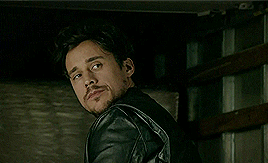
❝ APOCALYPSE BOY, YOU WON’T DESTROY ALL YOU TOUCH. YOU ARE MORE THAN YOUR DARKNESS AND MORE THAN THE DEATH YOU CARRY IN YOUR HANDS. ❞
⇨ aesthetics ⍮ the scent of fire and gasoline, a tall stature adorned in all-black attire, ghosts of bruises staining calloused skin green, an old punching bag in the corner of an old office, a towering figure shrouded in darkness as they linger in an empty church, bloodied noses and busted knuckles, a scuffed zippo lighter in a pack of marlboros containing only one cigarette, black shirts with the sleeves rolled up to the elbows, a sly smirk under stormy dark eyes, a sniper on the roof of a deserted building, the roar of a 1967 chevy impala engine, & a crumpled, worn family photo stuffed inside a wallet.
ALOHA !!! waddup, angels ?? it’s me, back at it again with another character bcos i have zero self control so here i am !! i’ll save you all from having to put up with my pointless babbles and get straight into it. as always, pls feel free to hmu on ims or discord ( chrissie.#9606 ) for plots and connections !!
FUNDAMENTALS.
full name. jace isaiah torres.
current age. thirty-four.
birthday. january 2, 1986.
gender. cisgender male.
pronouns. he / him.
nationality. british.
religion. raised roman catholic but no longer practices.
hometown. knightsbridge, london, england.
past residence. oxford, oxfordshire, england.
current residence. downtown, crystal city, united states.
sexual orientation. heterosexual.
romantic orientation. heteroromantic.
education. attended oxford university for a year before dropping out due to his mother’s passing.
occupation. security at violet, & elias morgan’s right hand man.
CONNECTIONS.
birth mother. katherine torres. †
birth father. alexander torres. †
step-father. nicholas carmichael. †
full blood siblings. none.
step-siblings. none.
maternal grandmother. julia monroe. †
maternal grandfather. andrew monroe. †
paternal grandmother. elizabeth torres. †
paternal grandfather. michael torres. †
maternal aunts. none.
maternal uncles. peter monroe.
paternal aunts. lucilee monroe, & miranda monroe.
paternal uncles. benjamin torres.
PROFICIENCIES.
spoken languages. english, & spanish.
negative traits. cunning, unfeeling, arrogant, cynical, & temperamental.
positive traits. astute, debonair, adroit, resolute, & adept.
strengths. sophistication, etiquette, professionalism, resourcefulness, integrity, delegation, honest, strong-willed, responsible, calm, practical, & a jack-of-all-trades.
weaknesses. impulsive, hot-tempered, stubborn, insensitive, judgmental, & by the book.
skills. skilled with firearms and other weaponry, hand-to-hand combat, lock-picking, carjacking, knowledge of automobiles, knowledge of the law, tracking people down, & excellent critical thinking and problem-solving abilities.
talents. piano, retaining information, memory recall, & marksmanship.
APPEARANCE.
eye colour. dark brown.
hair colour. dark brown.
height. six foot.
weight. 70 kg.
build. both tall and considerably broad, he is toned with an evident definition in his muscles.
scars. too many to count at this point.
tattoos. tba.
piercings. none.
glasses. n/a.
prominent feature. sharp, angular jawline.
MISCELLANEOUS.
zodiac. capricorn.
element. earth.
house. gryffindor.
myers briggs type. istj-a.
alignment. true neutral.
enneagram. type five.
temperament. choleric.
intelligence type. linguistic.
character label. the opaque.
past mental disorders. post-traumatic stress disorder, insomnia, & alcohol abuse.
current mental disorders. mild post-traumatic stress disorder, & insomnia.
addictions. alcohol, & tobacco.
vices. lust, wrath, & pride.
virtues. temperance, charity, & diligence.
allergies. n/a.
diet. carnivore.
accent. british.
dominant hand. right.
blood type. ab positive.
felonies. none.
vehicle. black 1967 chevy impala.
BACKGROUND.
TRIGGERS. car accident, death, domestic violence, drugs, violence, blades, stabbing, blood, & murder.
Born into a world of tenderness and light, Jace's arrival into this universe was a moderately placid one. The instant he opened his eyes to the world, he was a cherished and adored baby boy. This was how the young boy assumed his life would continue to play out: showered with affection and admiration, given endless love and support by both of his parents. With his father, Alexander, a renowned criminal lawyer and his mother, Katherine, an equally as esteemed neurosurgeon, the Torres family were respected, affluent and forefront in their community. Always hosting charity events, attending fancy galas, prominent figures at every fundraiser, the Torres' seemed as normal as just about any aristocratic London-based family. One might just say that Jace was destined for greatness — primed for success. Of course, all eyes of the extended Torres family were on the boy, watching and waiting to see how his story would unfold. Would he follow his father’s footsteps? Or his mother’s? The idea of him paving his own path had failed to cross the minds of them all.
From a young age, Jace had been incredibly intelligent and adept, his keen perception proving to extremely surpass that of his age. He was able to captivate others with both his appearance and his capabilities. Those in his company hung off his every word, often discovering themselves enthralled by a charming and sincere young boy. Regardless of his family’s secured position in society and their abundance of riches, Jace never looked for much more than their approval and their devotion. It is perhaps this fact alone that makes the next chapter in his life one of those unbearable moments that seem to live on for the rest of eternity, an emotion so overwhelming that it lingers in your bones until the end of time — rattling them every so often to remind you of the pain. The tenth instalment in the story of Jace’s life is what he would nowadays refer to as the beginning of the end. All of the light and love that he had encountered throughout his life up until that point had only been leading him to the tragedy and devastation that would prevail from that day henceforth. The night that Jace had been sat down by his mother and told that his father had met his fatal end in a horrific car accident was the same night that Jace lost a piece of himself. A ten-year-old boy endured his first heartbreak then. And, unfortunately, the torment refused to cease. Jace’s existence prior to the horrendous atrocity that altered the very fabric of his nature endured for what would now seem to him a fleeting period in time. Yet, throughout those ten years of normalcy, every transient second aided in concocting the basis for all that was to come.
Within the span of a single year, Katherine had found herself in the clutches of what Jace would grow to describe as a vulture; a man of a lower class who latched onto his mother — leeching off her riches while abusing her in the process. Soon, this man, Nicholas Carmichael, became Jace’s stepfather and things only dipped further south afterwards. Nicholas drank copious amounts of liquor, ran around behind Katherine’s back, smacked at Jace for defending his mother and the list went on. He manipulated Katherine, made her pick a side, tore her relationship with Jace asunder. Nicholas was indeed an angry, offhand man who often resorted to acts of violence toward both Katherine and Jace. During this time, and within the blink of an eye, Jace turned hostile and indifferent. It was as if he had transformed into a polar opposite version of what he’d always been — metamorphosing into an alternate version of his old self. Once a sheltered child who knew nothing but warmth and consideration, Jace was soon neglected, discarded and left to fend for himself. It was enough to turn him into a colder, less vibrant boy who soon became void of emotion and attachment. He picked fights with his stepfather for the sheer kick he got out of it, rebelled against his mother and found his once soft heart hardening as a result of years of enduring torment at the hands of Nicholas.
Unfortunately for Jace, he’d stepped out of line one too many times and aged eleven, he found himself sent off to an all-boys boarding school. In one way, he was thankful to be shot of the horrid creature who claimed to be his stepfather. Yet, on the other hand, he spent sleepless nights worried about the mortality of his mother. All in all, though, his time spent in the educational facility was a positive one. He made friends, excelled in all of his classes and extracurriculars. For the years that Jace boarded at the school, his life seemed to be steering him down the right path. Once he graduated, he’d decided to follow the same path as his father: criminal law. He felt it was the right thing to do in order to honour his father. Jace wound up attending Oxford University where he resided in a dorm, visiting his mother on the weekends. However, as all good things do, they come to an end. In Jace’s case, his few years of bliss and contentedness arrived at a rather abrupt halt, taking a severe nosedive. He was nineteen when he learned of his mother’s passing and, ultimately, lost control of himself and of his path in life. He dropped out of university, moved back home and spent many months alone and aimless; desperate to find answers behind his mother’s suspicious death. Of course, Nicholas was nowhere to be seen. He hadn’t even had the decency to show his face at Katherine’s funeral. One thing was for sure, though: he’d walked off into the sunset with the Torres fortune, presumably never to be seen again. The details outlined in Katherine’s autopsy report had been vague and nobody seemed willing to help Jace in his search for answers. Though that did little to deter him from continuing to hunt for the truth behind his mother’s death. Without a shadow of doubt in his mind, Jace knew deep down that Nicholas had been responsible but with no evidence, the idea of justice being served seemed to drift further and further out of reach.
Eventually, after years of fighting and persisting with his mission, Jace was able to uncover concealed elements of Nicholas’ background. As it turned out, the man was involved in gang activity and played a prime roll in drug trafficking throughout the streets of London. Though, still failing to get his hands on any kind of proof of Nicholas’ involvement in Katherine’s murder, a twenty-three-year-old Jace began to ponder if he should continue down this road. Tracking down his stepfather had consumed Jace whole, rotting him from the insides out. For so long he’d been holding onto an immense amount of resentment and wrath that he’d become bitter, hostile and obsessed. He knew it would only end in disaster if he continued to cling onto his vendetta and so for the following year, Jace pressed pause on seeking the truth. At least, until he’d happened upon a new lead that indeed confirmed his assumptions about Nicholas’ role in Katherine’s death. This was the break that Jace had been desperate for — the fuel that added flames to the fire within his belly. With new information and a penchant for revenge, he set off on his previously abandoned purpose.
Admittedly, it had taken Jace months to successfully unearth the exact location of Nicholas and when he did, he wasn’t entirely sure what to do with the information. Still, he set off for New York City with plans of confronting the man. Part of Jace wanted nothing more than to make his stepfather suffer, to subject Nicholas to torture as appalling as what Katherine had undoubtedly endured. Another part of him wanted to reveal all the little details that he’d uncovered, to tell him he knew what he’d done and watch his stepfather wince in objection and pathetically string one faux apology after another. Neither of these scenarios played out in the end. Instead, Jace’s first encounter with Nicholas after all this time had an entirely different outcome than he’d anticipated. Managing to tail the older man to Lux, Jace decided to linger around outside in the hopes that Nicholas would make an appearance. As fate would have it, only a mere hour had passed and there he was, leaving the building alone; having been removed from the vicinity for hassling one of the dancers. As Nicholas made his way to the back of the club, Jace followed in the shadows. Stood at the edge of the establishment to watch his stepfather from afar, Jace considered the endless possibilities that had entered his mind the second he set eyes on the man who’d destroyed his life.
When Jace eventually approached his stepfather, the look that claimed Nicholas’ face was one of incalculable shock and Jace couldn’t help but feel a twisted sense of pride in how his sheer presence brought about such dismay in the other man. He had to admit though, that it sent a strange twinge of nostalgia mixed together with dejection down the length of his spine. Jace had a collection of cruel words and obscenities he so desperately wanted to hurl the older man’s way. Alternatively, he opted for asking a question that had been haunting his warped mind for almost a decade. “Tell me, Nicholas. Why did you do it? Why did you murder my mother?” The inquiry almost made the other male tumble out of his shell even after he admitted that yes, he had been the one to end Katherine’s life and lacked even a shred of remorse. There was something in Nicholas’ blasé tone of voice that triggered an immediate rage deep within the pit of Jace’s stomach, bubbling and bubbling away, rising up and up until the only colour he could see was red and unfortunately for Nicholas, he was on the receiving end of Ross’ explosion. Moving in a flash, before he knew it, Jace was invading Nicholas’ personal space and the small blade he had been carrying was sunk into Nicholas’ abdomen.
Finally, once Jace had recoiled and his fists that had been balled into the fabric of Nicholas’ jacket eventually unfurled, his dark eyes took in the sight of the elder man’s towering figure collapse to the ground beneath him. Dropping his gaze to his hands, Jace noticed the way that the colour slowly began flowing back into his knuckles that had been white from the thin skin stretching tightly over the protruding bones. Flipping over his uncurled palms, Jace noted the way his hands trembled only marginally less than he expected they would be. It was the shrieking resonating in his ears that brought him to divert his attention toward Nicholas who was writhing around on the ground as a result of his suffering and loss of blood. Jace knew he had to get out of there — that he had to leave before he’d give anyone the chance to flock toward the screams and clap their eyes on his guilty face. As he backed away, watching the actions of his decision unfold, the feeling inside his gut was different than he imagined it would be. He had made the decision to kill Nicholas, there and then in the heat of the moment and it was a gradual and torturous death. A death inflicted by him deliberately, no matter the fact that it wasn’t premeditated. Lacking the desire to stick around and witness Nicholas’ final screech, Jace ran and before he even had the chance to allow any sort of repentance to seep into his body for what he’d just done, a gathering of men stepped out of a dark alleyway in front of him just footsteps away from the scene of the crime. There was something about the way in which they emerged from the darkness that caused Jace to immediately cease in his footfalls and as he briefly surveyed the area he realised there was nowhere left for him to run — there were too many of them and although he tried to fight them off, he was vastly outnumbered.
How Jace had managed to defend himself against the others, able to hold his own and give as good as he got, was beyond him. In the end, he pegged it down to sheer luck. Despite such a fluke, he was far from being out of the woods. Having witnessed the murder of Nicholas and how Jace had been able to stand his ground against the group, the eldest of the group of men had stepped forward to explain that he could use a young man of Jace’s stature and expertise. This was precisely how a then twenty-five-year-old Jace wound up entangled with the Berk-Morgan family. Initially, he was hired as a security for the same club that he’d slaughtered Nicholas outside of. After quite some time as an associate, he befriended Elias Morgan; soon becoming a confidant and someone the other trusted. Of course, the trust was mutual. And this has brought him into the position of becoming Elias’ right hand man. Now thirty-four, with nine years of experience under his belt, Jace is worlds away from the man he used to be. A shell of the man he used to be. Simply put, Jace has resigned himself to the reality that happiness is never going to be an emotion he will feel in his heart. He is closed off and secluded. He is mysterious and holds everyone in his life at arm’s length, afraid to let them in; only permitting people to see what he wants them to see and know what he wants them to know. His life is full of a myriad of memories soaked in blood and torment. A plethora of crooked dealings and immoral acts. But this is his life now and he isn’t prepared to give up the good fight – not after everything he has gone through just to be exactly where he is right now. A fighter has always lived inside of Jace Torres.
WANTED PLOTS.
give me all of the connections from friends, frenemies, enemies, hookups, exes, rivals and everything else in between. added bonus if there’s angst or drama. if you have anything in mind feel free to throw it at me, i’m open to the majority of things and have zero triggers so come at me bro !!
9 notes
·
View notes
Text
Chaka Khan

Yvette Marie Stevens (born March 23, 1953), better known by her stage name Chaka Khan, is an American singer and songwriter. Her career has spanned nearly five decades, beginning in the 1970s as the lead vocalist of the funk band Rufus. Khan received public attention for her vocals and image. Known as the "Queen of Funk", Khan was the first R&B artist to have a crossover hit featuring a rapper, with "I Feel for You" in 1984. Khan has won ten Grammy Awards and has sold an estimated 70 million records worldwide.
In the course of her solo career, Khan has achieved three gold singles, three gold albums and one platinum album with I Feel for You. With Rufus, she achieved four gold singles, four gold albums, and two platinum albums. She has collaborated with Ry Cooder, Robert Palmer, Ray Charles, Quincy Jones, Guru, Chicago, De la Soul, Mary J. Blige, among others. In December 2016, Billboard magazine ranked her as the 65th most successful dance artist of all time. She was ranked at number 17 in VH1's original list of the 100 Greatest Women of Rock & Roll. She has been nominated for induction into the Rock and Roll Hall of Fame twice; she was first nominated as member of Rufus in 2011.
Early life
Chaka Khan was born Yvette Marie Stevens on March 23, 1953 into an artistic, bohemian household in Chicago, Illinois. The eldest of five children born to Charles Stevens and Sandra Coleman, she has described her father as a beatnik and her mother as "able to do anything." She was raised in the Hyde Park area, "an island in the middle of the madness" of Chicago's rough South Side housing projects. Her sister Yvonne later became a successful musician in her own right under the name Taka Boom. Her only brother, Mark, who formed the funk group Aurra, also became a successful musician. She has two other sisters, Zaheva Stevens and Tammy McCrary.
Khan was raised as a Catholic. She attended the elementary school of Saint Thomas the Apostle Church in Hyde Park. She attributed her love of music to her grandmother, who introduced her to jazz as a child. Khan became a fan of rhythm and blues music as a preteen and at eleven formed a girl group, the Crystalettes, which included her sister Taka. In the late 1960s, Khan attended several civil rights rallies with her father's second wife, Connie, a strong supporter of the movement and joined the Black Panther Party after befriending a fellow member, activist and Chicago native Fred Hampton in 1967. Though many think that she was given the name Chaka while in the Panthers, she has made it clear that her name Chaka Adunne Aduffe Hodarhi Karifi was given to her at age 13 by a Yoruba Baba. In 1969, she left the Panthers and dropped out of high school, having attended Calumet High School and Kenwood High School (now Kenwood Academy). She began to perform in small groups around the Chicago area, first performing with Cash McCall's group Lyfe, which included her then-boyfriend Hassan Khan. Chaka and Hassan married in 1970.
She was asked to replace Baby Huey of Baby Huey & the Babysitters after Huey's death in 1970. The group disbanded a year later. While performing in local bands in 1972, Khan was spotted by two members of a new group called Rufus and soon won her position in the group (replacing rock n roll singer Paulette McWilliams). The group caught the attention of musician Ike Turner who flew them out to Los Angeles to record at his studio Bolic Sound in Inglewood, California. Turner wanted Khan to become an Ikette; she declined stating she was "really happy with Rufus. But Ike's attention was certainly a boost."
Career
1973–1978: Early career with Rufus
In 1973, Rufus signed with ABC Records and released their eponymous debut album. Despite their fiery rendition of Stevie Wonder's "Maybe Your Baby" from Wonder's acclaimed Talking Book and the modest success of the Chaka-led ballad "Whoever's Thrilling You (Is Killing Me)", the album failed to gain attention. That changed when Wonder himself collaborated with the group on a song he had written for Khan. That song, "Tell Me Something Good", became the group's breakthrough hit, reaching number-three on the Billboard Hot 100 in 1974, later winning the group their first Grammy Award. The single's success and the subsequent follow-up, "You Got the Love", which peaked at number eleven on the Billboard Hot 100, helped their second parent album, Rags to Rufus, go platinum, selling over a million copies. From 1974 to 1979, Rufus released six platinum-selling albums including Rufusized, Rufus Featuring Chaka Khan, Ask Rufus, Street Player and Masterjam. Hits the group scored during this time included "Once You Get Started," "Sweet Thing," "Hollywood," "At Midnight (My Love Will Lift You Up)," and "Do You Love What You Feel."
The band gained a reputation as a live performing act, with Khan becoming the star attraction, thanks to her powerful vocals and stage attire—which sometimes included Native American garb and showing her midriff. Most of the band's material was written and produced by the band itself with few exceptions. Khan has also been noted for being an instrumentalist playing drums and bass; she also provided percussion during her tenure with Rufus. Most of her compositions were collaborations with guitarist Tony Maiden. Relations between Khan and the group, particularly between her and Andre Fischer, became stormy. Several members left with nearly every release. While Khan remained in the group, she signed a solo contract with Warner Bros. Records in 1978. While Khan was busy at work on solo material, Rufus released three albums without her participation including 1979's Numbers, 1980's Party 'Til You're Broke, and 1983's Seal in Red.
1978–1983: Early solo career and final years with Rufus
In 1978, Warner Bros. Records released Khan's solo debut album, which featured the crossover disco hit, "I'm Every Woman", written for her by singers-songwriters Ashford & Simpson. The success of the single helped the album go platinum, selling over a million copies. Khan also featured on Quincy Jones's hit, "Stuff Like That", also released in 1978, which also featured Ashford & Simpson as co-writers, along with Jones and several others. Ashford & Simpson performed with Khan on the song.
In 1979, Khan reunited with Rufus to collaborate on the Jones-produced Masterjam, which featured their hit "Do You Love What You Feel", which Khan sang with Tony Maiden. Despite her sometimes-acrimonious relationship with some of her bandmates, Khan and Maiden have maintained a friendship over the years. In 1979 she also dueted with Ry Cooder on his album Bop Till You Drop. In 1980, while Rufus released Party 'Til You're Broke, again without Khan, she released her second solo album, Naughty, which featured her on the cover with her six-year-old daughter Milini. The album yielded the disco hit "Clouds" and the R&B ballad "Papillon".
Also in 1980, Khan had a cameo appearance as a church choir soloist in The Blues Brothers starring John Belushi and Dan Aykroyd. Khan released two albums in 1981, the Rufus release, Camouflage and the solo album What Cha' Gonna Do for Me. The latter album went gold. The same year, Khan appeared on three tracks on Rick Wakeman's concept album 1984. In 1982, Khan issued two more solo albums, the jazz-oriented Echoes of an Era and a more funk/pop-oriented self-titled album Chaka Khan. The latter album's track, the jazz-inflected "Be Bop Medley", won Khan a Grammy and earned praise from jazz singer Betty Carter who loved Khan's vocal scatting in the song.
In 1983, following the release of Rufus's final studio album, Seal in Red, which did not feature Khan, the singer returned with Rufus on a live album, Stompin' at the Savoy - Live, which featured the studio single, "Ain't Nobody", which became the group's final charting success reaching number 22 on the Billboard Hot 100 and number one on the Hot R&B chart, while also reaching the top ten in the United Kingdom. Following this release, Rufus separated for good.
1984–1996: Solo success
In 1984, Khan released her sixth studio album, I Feel for You. The title track, the first single released, was originally written and recorded by Prince in 1979 and had also been recorded by The Pointer Sisters and Rebbie Jackson. Khan's version featured a harmonica solo by Stevie Wonder and an introductory rap by Grandmaster Melle Mel. It became a million-selling smash in the U.S. and United Kingdom and helped to relaunch Khan's career. "I Feel for You" topped not only the U.S. R&B and dance charts, but achieved great success on the U.S. pop chart and reached No. 1 in the U.K. The song reached No. 3 on the Billboard Hot 100 in December 1984 and remained on that chart for 26 weeks, well into 1985. Additionally, it hit No. 1 on the Cash Box chart. It was listed as Billboard′s No. 5 song for 1985 and netted Prince the 1985 Grammy Award for Best R&B Song. In addition to the song's successful radio airplay and sales, a music video of Khan with breakdancers in an inner-city setting enjoyed heavy rotation on television and helped to solidify Khan's notoriety in popular culture.
Other singles that helped the I Feel For You album go platinum included "This is My Night" and the ballad "Through the Fire", the latter of which was also successful on the adult contemporary chart. Khan was featured in Steve Winwood's 1986 number-one hit, "Higher Love". That same year, a duet was planned with Robert Palmer for the song "Addicted To Love". However, her manager declined to release the duet, citing the desire to not have too much product from her in the marketplace at one time. She was still credited for the vocal arrangements in the album's liner notes, and the song became an international hit. Khan followed up the success of the I Feel For You album with 1986's Destiny and 1988's CK. Khan found more success in the late 1980s with a remix album, Life Is a Dance: The Remix Project, which reached the top ten on the British albums chart. As a result, she performed regularly in the U.K., where she maintained a strong fan base.
In 1990, she was a featured performer on another major hit when she collaborated with Ray Charles and Quincy Jones on a new jack swing cover of The Brothers Johnson's "I'll Be Good to You", which was featured on Jones's Back on the Block. The song reached No. 18 on the Billboard Hot 100 and No. 1 on the R&B chart, later winning her and Ray Charles a Grammy for Best R&B Vocal Performance By a Duo or Group. Khan returned with her first studio album in four years in 1992 with the release of The Woman I Am, which was a success due to the R&B songs "Love You All My Lifetime" and "You Can Make the Story Right".
Khan also contributed to soundtracks and worked on a follow-up to The Woman I Am she titled Dare You to Love Me, which was eventually shelved. In 1995, she and rapper Guru had a hit with the duet "Watch What You Say", in the U.K. That same year, she provided a contemporary R&B cover of the classic standard, "My Funny Valentine", for the Waiting to Exhale soundtrack. In 1996, following the release of her greatest-hits album, Epiphany: The Best of Chaka Khan, Vol. 1, Khan abruptly left Warner Bros. after stating the label had neglected her and failed to release Dare You to Love Me.
1998–2016
In 1998, Khan signed a contract with Prince's NPG Records label and issued Come 2 My House, followed by the single "Don't Talk 2 Strangers", a cover of a 1996 Prince song. She later went on a tour with Prince as a co-headlining act. In 2000, Khan departed NPG and she released her autobiography Chaka! Through The Fire in 2003. The following year she released her first jazz covers album in twenty-two years with 2004's ClassiKhan. She also covered "Little Wing" with Kenny Olson on the album Power of Soul: A Tribute to Jimi Hendrix. Three years later, after signing with Burgundy Records, Khan released what many critics called a "comeback album" with Funk This, produced by Jimmy Jam and Terry Lewis & Big Jim Wright. The album featured the hit, "Angel", and the Mary J. Blige duet, "Disrespectful". The latter track went to number one on the U.S. dance singles chart, winning the singers a Grammy Award, while Funk This also won a Grammy for Best R&B Album. The album was also notable for Khan's covers of Dee Dee Warwick's "Foolish Fool" and Prince's "Sign o' the Times". In 2008, Khan participated in the Broadway adaptation of The Color Purple playing Ms. Sofia to Fantasia Barrino's Celie.
In December 2004, Chaka Khan was awarded an Honorary Doctorate of Music from Berklee College of Music during the inauguration of its president, Roger H. Brown.
In a 2008 interview Khan said that she, unlike other artists, felt very optimistic about the current changes in the recording industry, including music downloading. "I'm glad things are shifting and artists – not labels – are having more control over their art. My previous big record company (Warner Bros.) has vaults of my recordings that haven't seen the light of day that people need to hear. This includes Robert Palmer's original recording of 'Addicted to Love' – which they took my vocals off of! We are working on getting it (and other tracks) all back now." In 2009, Khan hit the road with singers Anastacia and Lulu for Here Come the Girls.
In 2009, Chaka was guest singer with the song "Alive" on jazz drummer Billy Cobham's album Drum ' n voice 3. In 2010, she contributed to vocals for Beverley Knight's "Soul Survivor", collaborated with Clay Aiken on a song for the kids show Phineas and Ferb, and performed two songs with Japanese singer Ai on Ai's latest album The Last Ai. Khan continues to perform to packed audiences both in her native United States and overseas.
On May 19, 2011, Khan was given the 2,440th Hollywood Walk of Fame star plaque on a section of Hollywood Boulevard in Los Angeles. Her family was present when the singer accepted the honor, as was Stevie Wonder, who had written her breakout hit "Tell Me Something Good". On September 27, 2011, the Rock & Roll Hall of Fame committee announced that Khan and her former band Rufus were jointly nominated for induction to the hall. It was the collective's first nomination 13 years after they were first eligible. The group were nominated partly due to Khan's own storied reputation, including her own solo career in conjunction with her years with Rufus. Recently, Khan rerecorded her song, "Super Life", under the title "Super Life: Fear Kills, Love Heals" with Eric Benet, Kelly Price, and Luke James in tribute to Trayvon Martin, a teenager who was killed on February 26. A number of celebrities also joined in the recording including Loretta Devine, Terry Crews, Eva Pigford, and reporter Kevin Frazier.
On December 6, 2012, Chaka Khan made a controversial decision to perform at a benefit for the Israeli Defense Forces (IDF). The IDF originally invited Stevie Wonder, however after a successful lobbying campaign by the US Campaign to End the Israeli Occupation, Wonder withdrew and was replaced by Khan who was able to raise $14 million for the IDF. This support contrasted with her earlier support for the Black Panther Party that publicly supported a Free Palestine.
On July 27, 2013, Khan was honored 40 years after signing her first recording contract with a ceremonial renaming of Blackstone Avenue between 50th and 51st street (where her former high school, Kenwood Academy, sits) as Chaka Khan Way and on July 28 the city declared the day Chaka Khan Day. She performed at Millennium Park's Pritzker Pavilion on the 28th. In August 2014, Khan served as grand marshal at the 85th annual Bud Billiken Parade and Picnic in her hometown of Chicago.
On August 27, 2015, Khan was announced as one of the celebrities who would compete on season 21 of Dancing with the Stars. She was paired with professional dancer Keo Motsepe. Khan and Motsepe were the first couple eliminated from the competition on September 21, 2015.In July 2016, she canceled concert performances and entered rehab.
2018-present:
Hello Happiness
In June 2018 she released a new single called "Like Sugar", a collaboration with Major Lazer member Switch. She later went on to promote the single on the Ellen show. "Like Sugar" is included on her 2019 album Hello Happiness. The album was released on February 15, 2019 and is her first album in twelve years.
Khan served as Grand Marshal in the 2019 Pasadena Tournament of Roses Parade on January 1, 2019 in Pasadena, California.
On June 25, 2019, The New York Times Magazine listed Chaka Khan among hundreds of artists whose material was reportedly destroyed in the 2008 Universal fire.
In October 2019, Khan was an honoree at Variety's "Power of Women" luncheon for supporting Little Kids Rock. Other honorees were Mariah Carey, Jennifer Aniston, Brie Larson, Awkwafina, and Dana Walden.In November 2019, Khan collaborated with Ariana Grande on the song "Nobody" from the soundtrack Charlie's Angels.
In 2020, Khan competed in season 3 of The Masked Singer as Miss Monster. She was eliminated and unmasked in the third episode.
Khan was invited to sing the National Anthem at the 2020 NBA All-Star Game. Her rendition has been heavily criticized on Twitter, comparing it to Fergie's rendition in 2018.
Personal life
Khan has been married twice and is the mother of two, daughter Indira Milini and son Damien Holland. Her first marriage was to Hassan Khan, in 1970, when she was 17, which ended in divorce a short time later. Milini's birth was the result of a relationship between Khan and Rahsaan Morris. Khan married her second husband, Richard Holland, in 1976. The marriage reportedly caused a rift between Khan and several members of Rufus, in particular, Andre Fischer. Holland wanted her to tone down her sexy stage image, but she refused. He filed for divorce in 1980, citing "irreconcilable differences." Khan dated a Chicago-area schoolteacher in the mid-1980s in the middle of her solo stardom. Following their separation, Khan moved to Europe, first settling in London, later buying a residence in Germany. She lived in Germany for a while "in a little village in the Rhine Valley" and also in Mannheim.
Khan is vegan, saying she adopted the diet to lose weight and combat high blood pressure and Type-2 diabetes. In the past, Khan struggled with drug abuse and alcoholism. Her drug use, which at times included cocaine and heroin, ended in the early 1990s. Khan had an on-and-off struggle with alcoholism until 2005, declaring herself sober. In 2006, her son Damien Holland was accused of murder after 17-year-old Christopher Bailey was shot to death. Khan testified on her son's behalf. Holland claimed the shooting was an accident. He was acquitted in the criminal trial and found liable in the civil suit. Though she sang at both the 2000 Democratic and Republican conventions, Khan says that she is more of a "Democratic-minded person".
Khan was featured in a 2013 episode of Celebrity Ghost Stories where she told the story of a shadow man who followed her on tour for years, until she met a guardian angel who admonished her to change her life or die.
Awards and nominations
Grammy Awards
To date, Khan has won ten Grammy Awards, including two as a member of Rufus. She has received 22 Grammy Award nominations, including three as a member of Rufus.
Soul Train Awards
1998 Lena Horne Award (Career Achievement) (Recipient)
2009 Legends Award (Career Achievement) (Recipient)
United Negro College Fund Award
2011 UNCF: Award of Excellence (Recipient)
American Music Award nominations
To date, she has had four American Music Award nominations.
1985 Favorite Female Artist – Soul/Rhythm & Blues (Nominee only. Award recipient was Tina Turner)
1982 Favorite Female Artist – Soul/Rhythm & Blues (Nominee only. Award recipient was Stephanie Mills)
1981 Favorite Female Artist – Soul/Rhythm & Blues (Nominee only. Award recipient was Diana Ross)
SoulMusic Hall of Fame at SoulMusic.com
Inducted: Female Artist (December 2012)
UK Music Video Awards
2018 Best Color Grading in a Video: Like Sugar (won)
2018 Best Editing: Like Sugar (won)
Discography
Solo
Chaka (1978)
Naughty (1980)
What Cha' Gonna Do for Me (1981)
Chaka Khan (1982)
Echoes of an Era (1982)
I Feel for You (1984)
Destiny (1986)
ck (1988)
The Woman I Am (1992)
Come 2 My House (1998)
ClassiKhan (2004)
Funk This (2007)
Hello Happiness (2019)
With Rufus
Rufus (1973)
Rags to Rufus (1974)
Rufusized (1974)
Rufus featuring Chaka Khan (1975)
Ask Rufus (1977)
Street Player (1978)
Masterjam (1979)
Camouflage (1981)
Stompin' at the Savoy – Live (1983)
As guest
All My Friends Are Here, So Blue - Arif Mardin feat. Chaka Khan & David Sanborn
15 notes
·
View notes
Photo
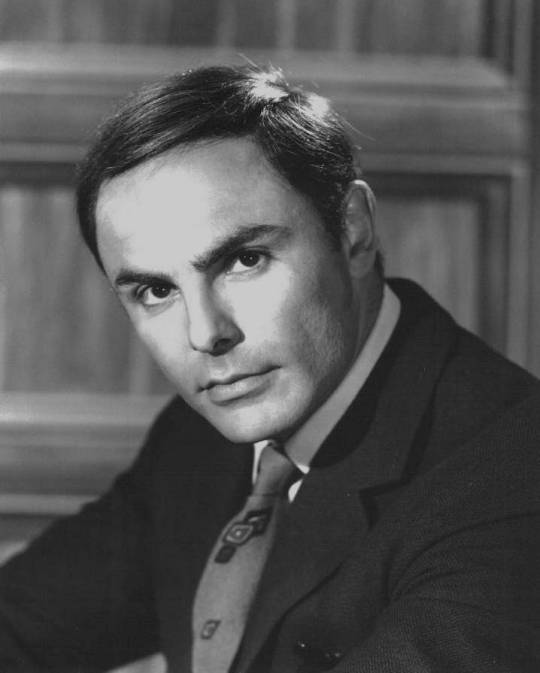
John Saxon (born Carmine Orrico; August 5, 1936 – July 25, 2020) Film and television actor who worked on more than 200 projects during a span of 60 years.
He portrayed Marco Polo in episode 26 of The Time Tunnel ("Attack of the Barbarians"), originally broadcast on March 10, 1967, and was a guest actor on Bonanza in 1967 ("The Conquistadores"). In episode 19, season 5 of The Virginian ("The Modoc Kid") Saxon appeared in the title role alongside a young actor, appearing in one of his first speaking roles, Harrison Ford. And in 1969 he appeared in Bonanza again ("My Friend, My Enemy"). He spent three years playing Dr. Theodore Stuart for the television series The Bold Ones: The New Doctors (1969–1972
Saxon starred as Dylan Hunt in the 1974 Gene Roddenberry television pilot Planet Earth, replacing Alex Cord from Genesis II. A 20th Century scientist unfrozen in the post-nuclear world of 2133, he leads a team of explorers and encounters a matriarchal society. Although ABC declined the series, Saxon played a nearly identical character in the 1975 television film Strange New World.
In 1976, Saxon portrayed a homicidal vampire-like strangler in the Season Two Starsky & Hutch episode 'Vampire'. He played Captain Radl in the two-part Wonder Woman episode "The Feminine Mystique" (1976). Raid on Entebbe (1977) was a prestige television movie for him.
He appeared in the 1982 television movie Rooster, and he was an occasional celebrity guest on the short-lived game show Whew!, including during the series' final week. His extensive television credits include two years as Tony Cumson on Falcon Crest (1982, 1986–1988) as well as the recurring role of Rashid Ahmed on Dynasty (1982–84). He appeared twice (in different roles) on The A-Team, in 1983 and 1985. (Wikipedia)
4 notes
·
View notes